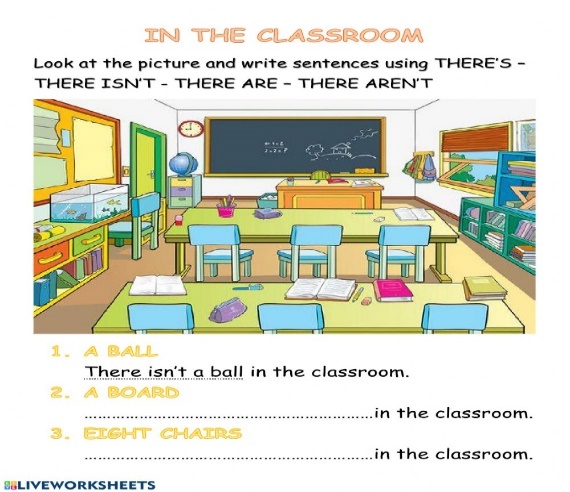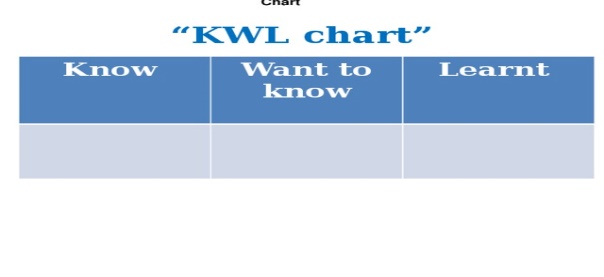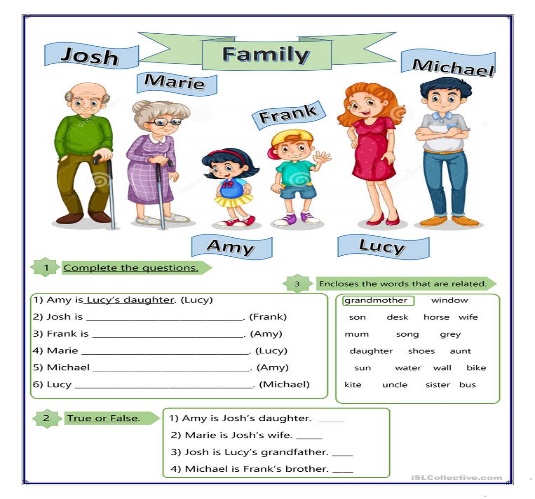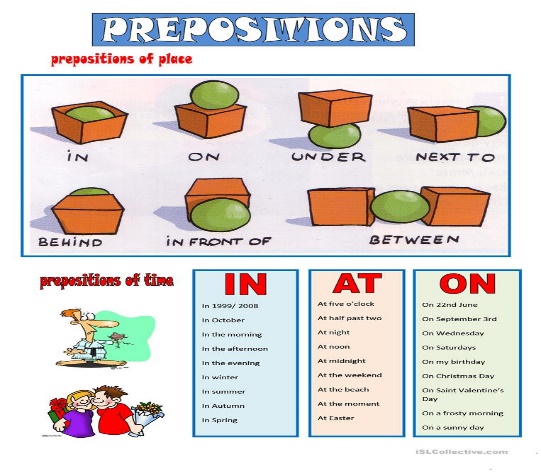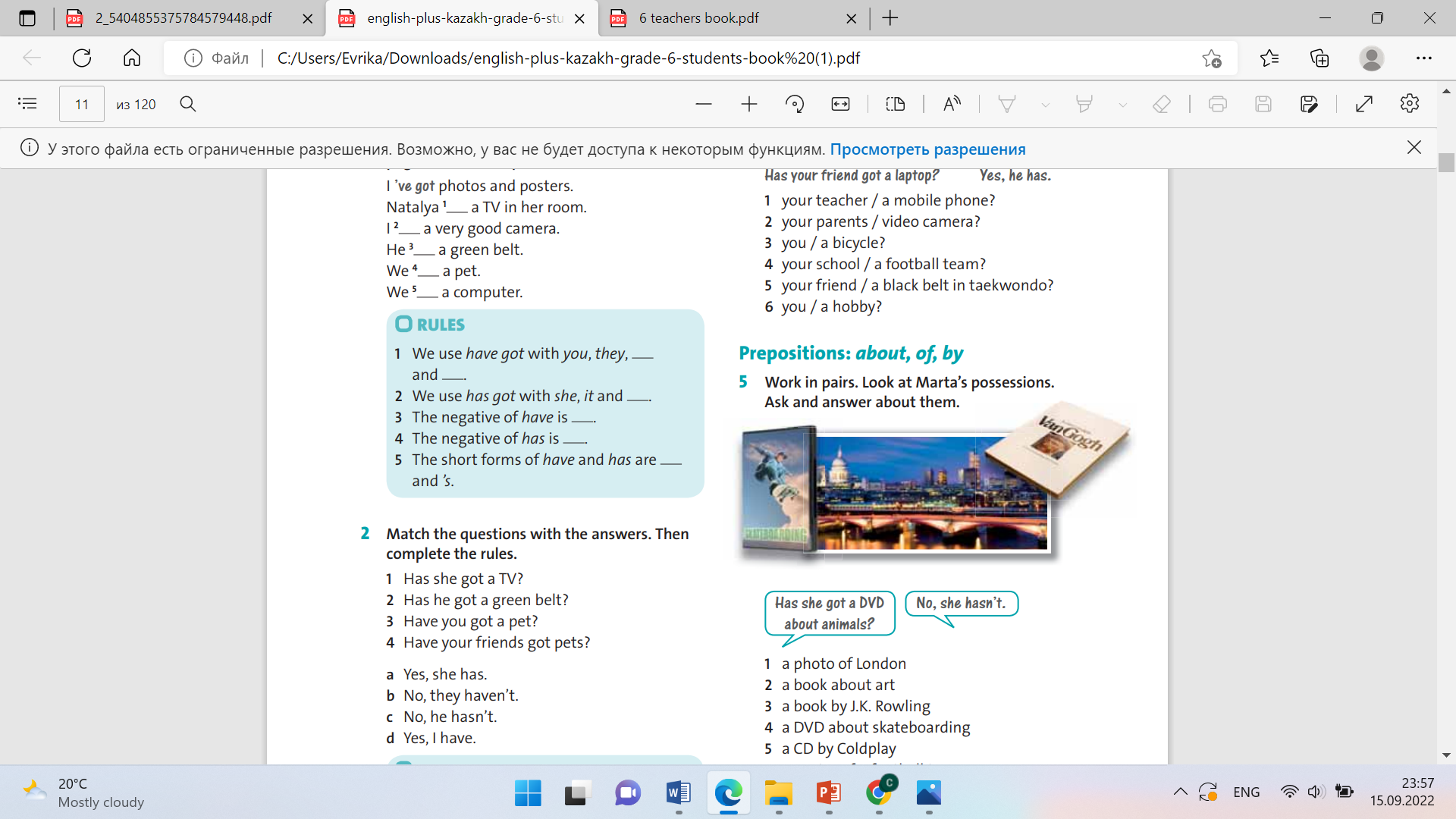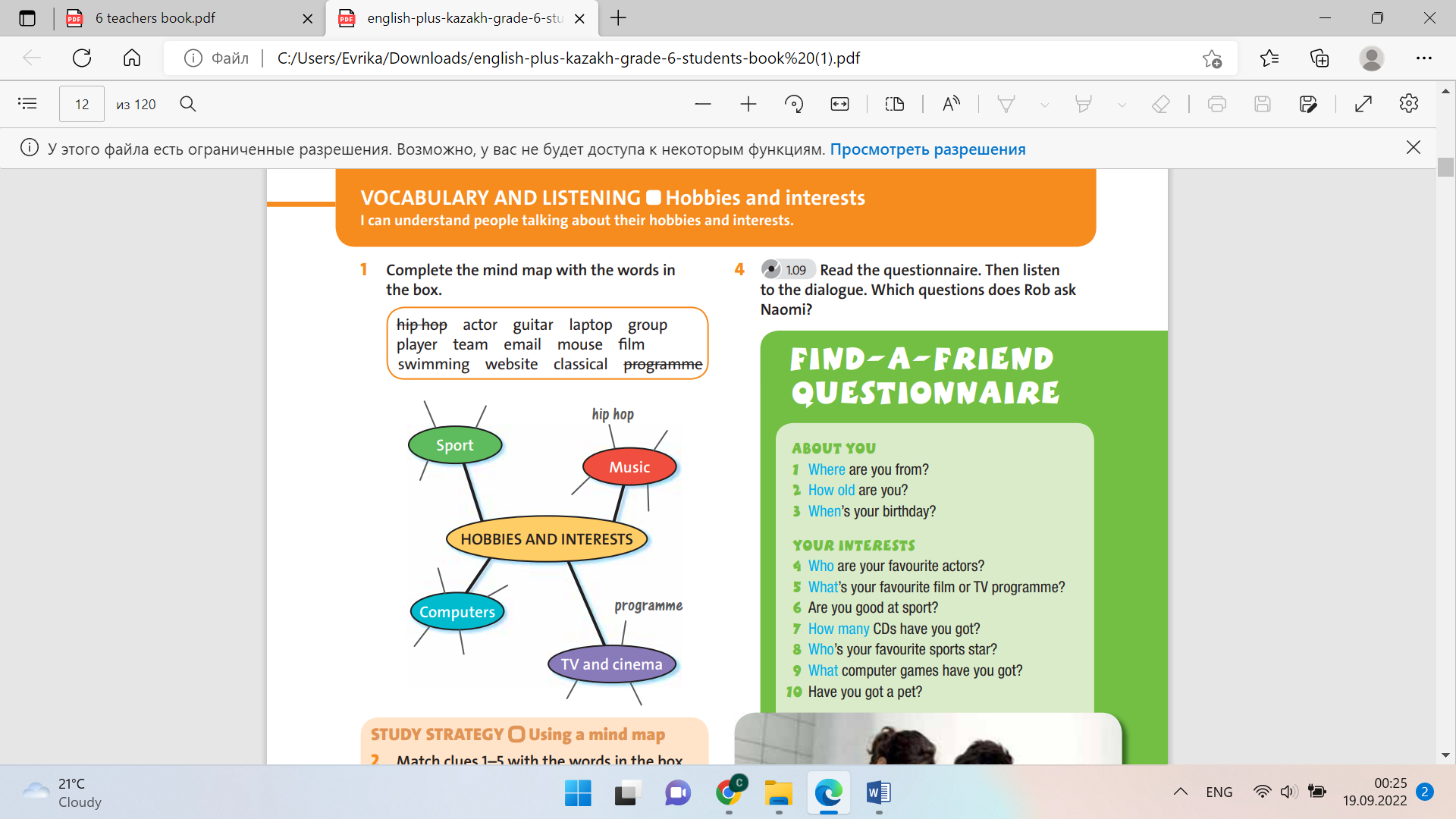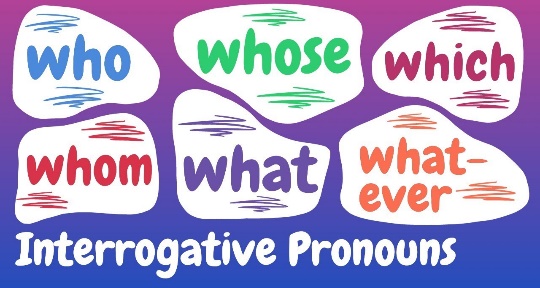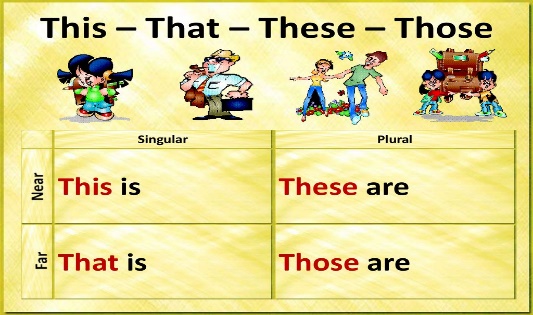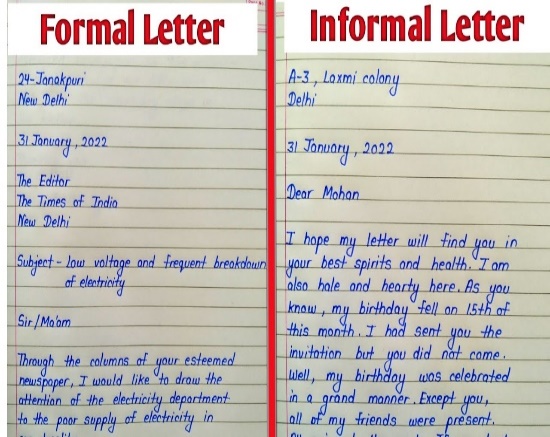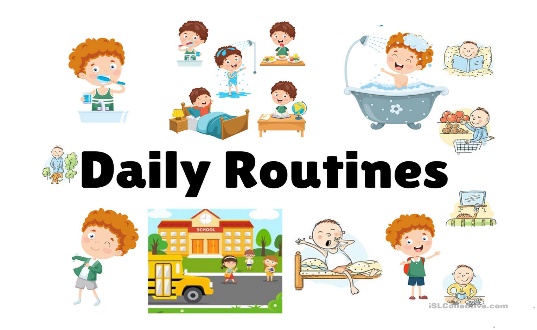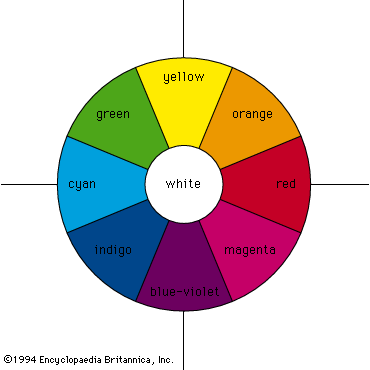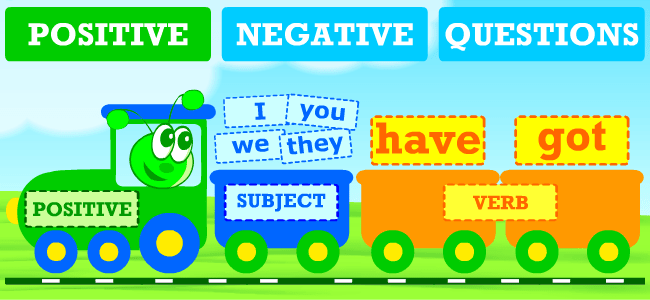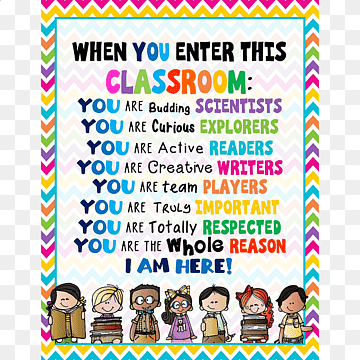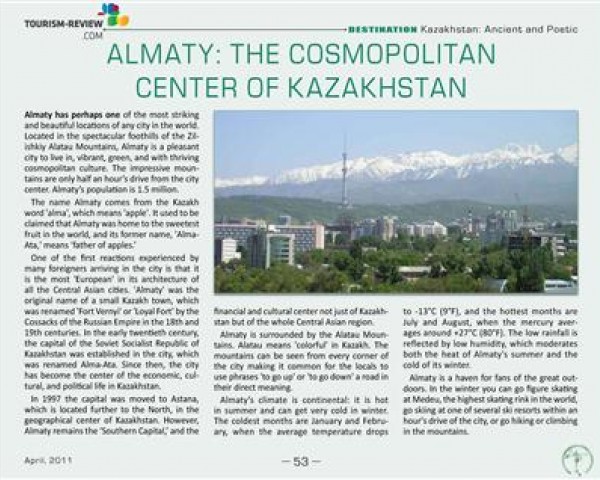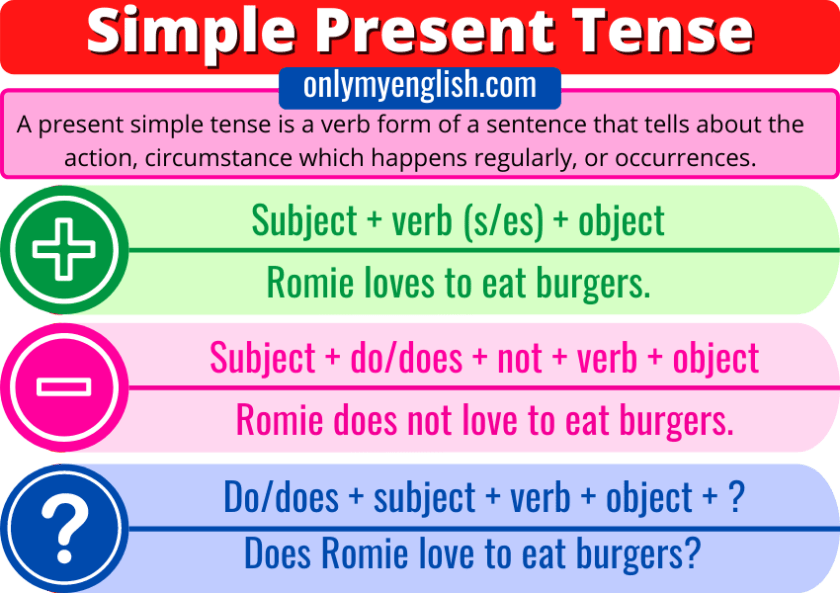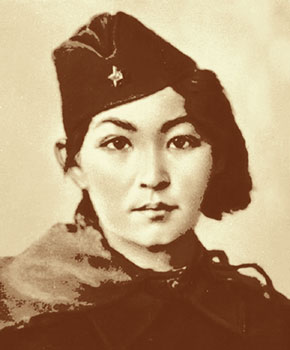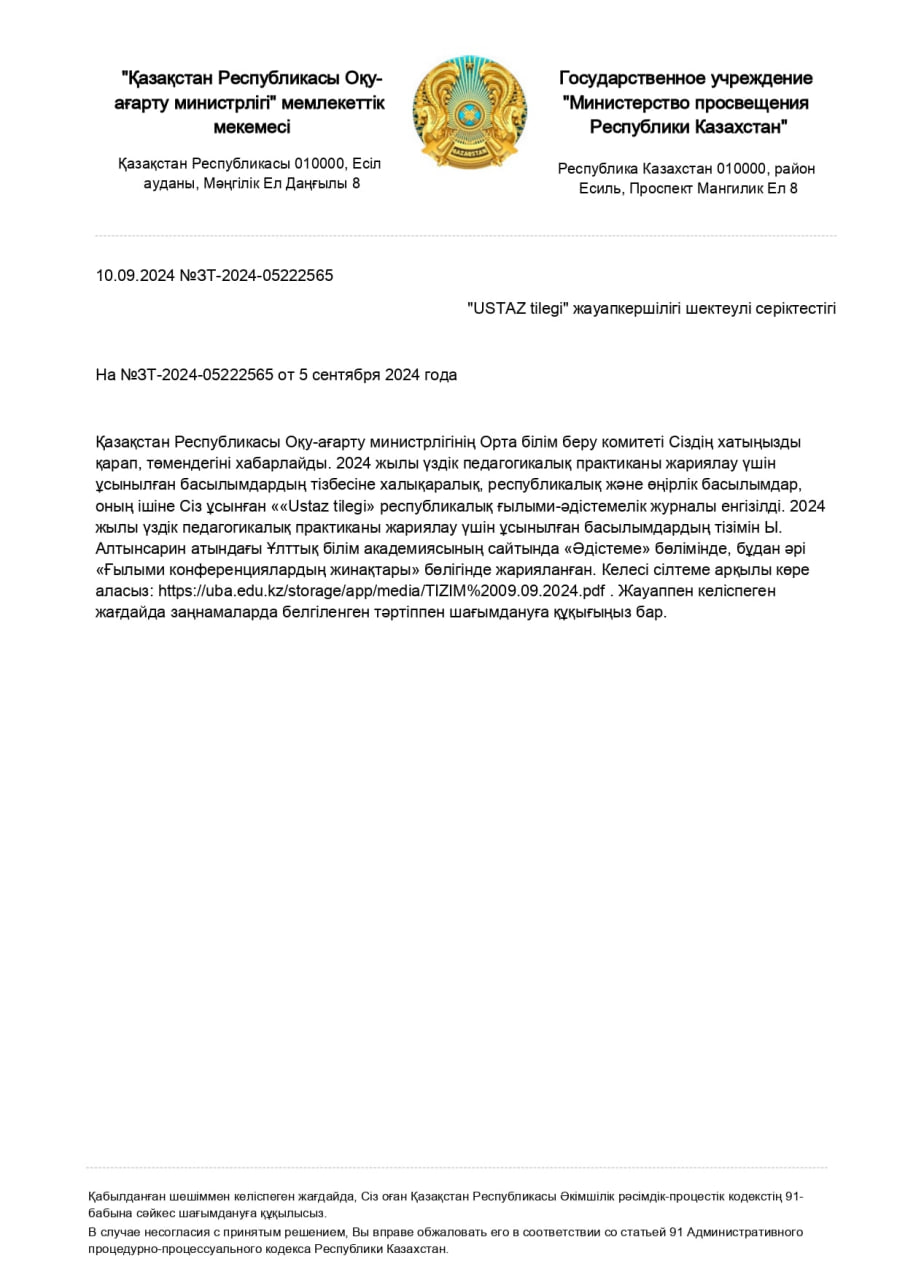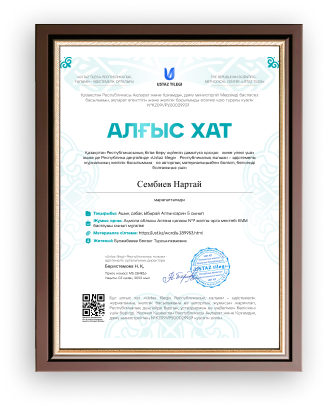
Short term plan
Тексерілді: Қ. Байсеитов
|
Unit of a long term plan: Our class |
School: By name S. Erubayev |
||
|
Date:02.09.22 |
Teacher name: S. Murataliyeva |
||
|
Grade: 6 |
Number present: |
absent: |
|
|
Lesson title |
A classroom. |
||
|
Learning objectives |
6.2.1.1 understand a sequence of supported classroom instructions 6.3.1.1 provide basic information about themselves and others at sentence level on an increasing range of general topics ( Ex.1 p 4,describe a classroom, revise a verb " to be") |
||
|
Lesson objectives |
Learners will be able to:
|
||
|
Plan |
|||
|
Stages / Time |
Teachers actions |
Students actions |
Assessment criteria |
Resources |
|
Start
|
Organization moment 1.Greeting. Ask about the weather. Pre-listening: Warm-up With books closed, ask: Where are we at the moment? • Elicit the word classroom and write it on the board. • Ask: What can you find in a classroom? Elicit a few words from individual students. Lead - In Look at the picture and say what the theme of our lesson will be? You see different word in the picture. What can you see in this picture?
It is a board. It is a clock. There are six chairs in the classroom.
|
The wish flower” method helps to start the lesson with good wishes to each other. The aim: To develop Ss speaking skills and create friendly atmosphere Efficiency: By telling the wishes they show their appreciations .
Describe and imagine the pictures Students say different words from the picture
|
At the organization moment T tries to award active Ss. «The praise» method is used to evaluate Ss with phrases like: “Good job! Well done!” Formative Assessment
Good job! |
CD 1 Pictures PPT |
|
Main part
|
While-listening: To present/practise vocabulary related to class's hobbies and interests Play the next recording. Ss listen and repeat chorally or individually. Elicit the L1 equivalents from various Ss. Exercise 1 • Go through the words in the wordpool with students and check understanding. Then study the picture with the class and do the example. Students complete the activity. In a weaker class, allow students to work in pairs. • Model and drill the pronunciation of any new words Differentiation: «Verbal support» method is used to help Students use new words in the text. Exercise 2 Read out the example sentence. Ask students to find the poster and the door, and then to say whether the sentence is true or false. Confirm that the sentence is false, because the poster is not near the door in this picture Differentiation:Support; learners are arranged to interact in mixed groups. Topic vocabulary is used while responding to the given questions |
. Ss listen and repeat chorally or individually. Students write the name of objects 1-16 in the picture. Then listen and check. ANSWERS 1 window 2 laptop 3 CD player 4 shelf 5 DVD 6 door 7 board 8 clock 9 poster 10 chair 11 notebook 12 pen 13 desk 14 dictionary 15 ruler 16 bag
Students read the sentences and write true or false ANSWERS 1 true 2 false 3 false 4 true 5 false 6 false
|
Assessment criteria - identify some specific information from the text Descriptor: -Understand classroom instructions Peer assessment: answer key Assessment criteria: -Use topic related vocabulary in group discussion -Make CCQ questions
|
Cards Student’s book Workshets |
|
End
|
Home task: Ex: 1,2 P: 4 WB |
|
Poster Success |
|
Short term plan
Тексерілді: Қ. Байсеитов
|
Unit of a long term plan: Our class |
School: By name S. Erubayev |
||
|
Date:05.09.22 |
Teacher name: S. Murataliyeva |
||
|
Grade: 6 |
Number present: |
absent: |
|
|
Lesson title |
Possessive’s and subject and object pronouns |
||
|
Learning objectives |
6.3.1.1 provide basic information about themselves and others at sentence level on an increasing range of general topics ( Ex.1 - 2. p.10). 6.4.2.1 understand with little support specific information and detail in short, simple texts on a ( Ex.3.p. 10) 6.3.3.1 give an opinion at sentence level on a limited range of general and curricular topics ( Ex.5 p.10) |
||
|
Lesson objectives |
Learners will be able to:
|
||
|
Plan |
|||
|
Stages / Time |
Teachers actions |
Students actions |
Assessment criteria |
Resources |
|
Start
|
Organization moment 1.Greeting. Ask about the weather. Warm-up Ask an individual student to hold up their pen or notebook. • Ask: Is that my pen / notebook? • Elicit the answer (No, it’s Anna’s pen / notebook). • Repeat the process with a different student. Lead - In Ask questions about your friend’s family.
|
The wish flower” method helps to start the lesson with good wishes to each other. The aim: To develop Ss speaking skills and create friendly atmosphere Efficiency: By telling the wishes they show their appreciations . Describe and imagine the pictures Students say about their family.
|
At the organization moment T tries to award active Ss. «The praise» method is used to evaluate Ss with phrases like: “Good job! Well done!” Formative Assessment
Good job! |
CD 1 Pictures PPT |
|
Main part
|
Exercise 2 Demonstrate on the board how to use the prompts to write phrases with the possessive ’s in the correct place. In a weaker class, explain that they do not need to write full sentences. In a stronger class, students could look at the picture on page 4 and write full sentences Differentiation: «Verbal support» method is used to help Students use new words in the text. Exercise 4 • In a weaker class, you could ask students to do this exercise in pairs Differentiation:Support; learners are arranged to interact in mixed groups. Topic vocabulary is used while responding to the given questions |
Students write phrases for 1-6. Add an apostrophe (‘) or ‘s ANSWERS 1David’s laptop 4 Larissa’s dictionary 2 the teacher’s CD player 5 Liam’s notebook 3 the girl’s DVDs 6 the students’ pens Students choose the correct words ANSWERS 1 Her 2 She’s 3 We’re 4 Our 5 He’s 6 His 7 my 8 They’re
|
Assessment criteria - Learn and practise the use of ’s and s’ to talk about possession. Descriptor: Can tolk about possession Peer assessment: answer key Assessment criteria: -Learn and use object pronouns. -Make CCQ questions |
Cards Student’s book Wrkshets |
|
End
|
Home task: Ex: 2 P: 5 WB |
|
Poster Success |
|
Short term plan
Тексерілді: Қ. Байсеитов
|
Unit of a long term plan: Our class |
School: By name S. Erubayev |
||
|
Date:07.09.22 |
Teacher name: S. Murataliyeva |
||
|
Grade: 6 |
Number present: |
absent: |
|
|
Lesson title |
Basic adjectives Diagnostic test |
||
|
Learning objectives |
6.2.2.1 understand an increasing range of unsupported basic questions which ask for personal information 6.5.3.1 write with support factual descriptions at text level which describe people, places and objects ( Category of hobbies - topic discussion) p.12 6.2.6.1 deduce meaning from context in short, supported talk on an increasing range of general and curricular topics ( Ex.4 p.12) |
||
|
Lesson objectives |
Learners will be able to:
|
||
|
Plan |
|||
|
Stages / Time |
Teachers actions |
Students actions |
Assessment criteria |
Resources |
|
Start
|
Organization moment 1.Greeting. Ask about the weather. Pre-listening: Warm-up • With books closed, ask students about a current TV programme, e.g. Do you like Big Brother on TV? Why? • Elicit some answers from the class, and elicit adjectives such as funny, interesting and boring and write them on the board. • Elicit or tell students that these words are adjectives and we use them to describe things. Lead - In
|
The wish flower” method helps to start the lesson with good wishes to each other. The aim: To develop Ss speaking skills and create friendly atmosphere Efficiency: By telling the wishes they show their appreciations .
Students find adjectives |
At the organization moment T tries to award active Ss. «The praise» method is used to evaluate Ss with phrases like: “Good job! Well done!” Formative Assessment Good job!
|
CD 1 Pictures PPT |
|
Main part
|
While-listening: Exercise 1 • Look at adjectives 1–7 with the class. Translate any they do not know In a weaker class, you could check understanding by asking students to translate all the adjectives into their own language. In a stronger class, ask if students can tell you any more adjectives and their opposites Differentiation: «Verbal support» method is used to help Students use new words in the text. Exercise 2 Students order the days. In a stronger class, ask students to close their books and do this orally. In a weaker class, write each day on the board as it is said, and ask them to copy the list into their notebooks when it is complete. Use the CD to drill pronunciation Differentiation:Support; learners are arranged to interact in mixed groups. Topic vocabulary is used while responding to the given questions |
Students match adjectives and give their opposites. ANSWERS 1 bad 5 small 2 unpopular 6 expensive 3 boring 7 horrible 4 difficult Students write the name of objects 1-16 in the picture. Then listen and check. ANSWERS 1 window 2 laptop 3 CD player 4 shelf 5 DVD 6 door 7 board 8 clock 9 poster 10 chair 11 notebook 12 pen 13 desk 14 dictionary 15 ruler 16 bag
|
Assessment criteria - Learn the meaning of basic adjectives. Descriptor: -can give their opposites Peer assessment: answer key Assessment criteria: - Use days and months in personalized sentences -Make CCQ questions
|
Cards Student’s book Workshets |
|
End
|
Home task: Ex: 1,2 P: 4 WB |
|
Poster Success |
|
Short term plan
Тексерілді: Қ. Байсеитов
|
Unit of a long term plan: Our class |
School: By name S. Erubayev |
||
|
Date:09.09.22 |
Teacher name: S. Murataliyeva |
||
|
Grade: 6 |
Number present: |
absent: |
|
|
Lesson title |
Language focus: be affirmative, negative and questions |
||
|
Learning objectives |
6.2.1.1 understand a sequence of supported classroom instructions 6.3.1.1 provide basic information about themselves and others at sentence level on an increasing range of general topics ( Ex.1 p 4,describe a classroom, revise a verb " to be") |
||
|
Lesson objectives |
Learners will be able to:
|
||
|
Plan |
|||
|
Stages / Time |
Teachers actions |
Students actions |
Assessment criteria |
Resources |
|
Start
|
Organization moment 1.Greeting. Ask about the weather. Pre-listening: Warm-up With books closed, ask: Where are we at the moment? • Elicit the word classroom and write it on the board. • Ask: What can you find in a classroom? Elicit a few words from individual students. Lead - In Look at the picture and say what the theme of our lesson will be? You see different word in the picture. What can you see in this picture?
It is a board. It is a clock. There are six chairs in the classroom.
|
The wish flower” method helps to start the lesson with good wishes to each other. The aim: To develop Ss speaking skills and create friendly atmosphere Efficiency: By telling the wishes they show their appreciations .
Describe and imagine the pictures Students say different words from the picture
|
At the organization moment T tries to award active Ss. «The praise» method is used to evaluate Ss with phrases like: “Good job! Well done!” Formative Assessment
Good job! |
CD 1 Pictures PPT |
|
Main part
|
While-listening: To present/practise vocabulary related to class's hobbies and interests Play the next recording. Ss listen and repeat chorally or individually. Elicit the L1 equivalents from various Ss. Exercise 1 • Go through the words in the wordpool with students and check understanding. Then study the picture with the class and do the example. Students complete the activity. In a weaker class, allow students to work in pairs. • Model and drill the pronunciation of any new words Differentiation: «Verbal support» method is used to help Students use new words in the text. Exercise 2 Read out the example sentence. Ask students to find the poster and the door, and then to say whether the sentence is true or false. Confirm that the sentence is false, because the poster is not near the door in this picture Differentiation:Support; learners are arranged to interact in mixed groups. Topic vocabulary is used while responding to the given questions |
. Ss listen and repeat chorally or individually. Students write the name of objects 1-16 in the picture. Then listen and check. ANSWERS 1 window 2 laptop 3 CD player 4 shelf 5 DVD 6 door 7 board 8 clock 9 poster 10 chair 11 notebook 12 pen 13 desk 14 dictionary 15 ruler 16 bag
Students read the sentences and write true or false ANSWERS 1 true 2 false 3 false 4 true 5 false 6 false
|
Assessment criteria - identify some specific information from the text Descriptor: -Understand classroom instructions Peer assessment: answer key Assessment criteria: -Use topic related vocabulary in group discussion -Make CCQ questions
|
Cards Student’s book Workshets |
|
End
|
Home task: Ex: 1,2 P: 4 WB |
|
Poster Success |
|
Short term plan
Тексерілді: Қ. Байсеитов
|
Unit of a long term plan: Our class |
School: By name S. Erubayev |
||
|
Date:12.09.22 |
Teacher name: S. Murataliyeva |
||
|
Grade: 6 |
Number present: |
absent: |
|
|
Lesson title |
Free time |
||
|
Learning objectives |
6.2.1.1 understand a sequence of supported classroom instructions 6.3.1.1 provide basic information about themselves and others at sentence level on an increasing range of general topics ( Ex.1 p 4,describe a classroom, revise a verb " to be") |
||
|
Lesson objectives |
Learners will be able to:
|
||
|
Plan |
|||
|
Stages / Time |
Teachers actions |
Students actions |
Assessment criteria |
Resources |
|
Start
|
Organization moment 1.Greeting. Ask about the weather. Pre-listening: Warm-up With books closed, ask: Where are we at the moment? • Elicit the word classroom and write it on the board. • Ask: What can you find in a classroom? Elicit a few words from individual students. Lead - In Look at the picture and say what the theme of our lesson will be? You see different word in the picture. What can you see in this picture?
It is a board. It is a clock. There are six chairs in the classroom.
|
The wish flower” method helps to start the lesson with good wishes to each other. The aim: To develop Ss speaking skills and create friendly atmosphere Efficiency: By telling the wishes they show their appreciations .
Describe and imagine the pictures Students say different words from the picture
|
At the organization moment T tries to award active Ss. «The praise» method is used to evaluate Ss with phrases like: “Good job! Well done!” Formative Assessment
Good job! |
CD 1 Pictures PPT |
|
Main part
|
While-listening: To present/practise vocabulary related to class's hobbies and interests Play the next recording. Ss listen and repeat chorally or individually. Elicit the L1 equivalents from various Ss. Exercise 1 • Go through the words in the wordpool with students and check understanding. Then study the picture with the class and do the example. Students complete the activity. In a weaker class, allow students to work in pairs. • Model and drill the pronunciation of any new words Differentiation: «Verbal support» method is used to help Students use new words in the text. Exercise 2 Read out the example sentence. Ask students to find the poster and the door, and then to say whether the sentence is true or false. Confirm that the sentence is false, because the poster is not near the door in this picture Differentiation:Support; learners are arranged to interact in mixed groups. Topic vocabulary is used while responding to the given questions |
. Ss listen and repeat chorally or individually. Students write the name of objects 1-16 in the picture. Then listen and check. ANSWERS 1 window 2 laptop 3 CD player 4 shelf 5 DVD 6 door 7 board 8 clock 9 poster 10 chair 11 notebook 12 pen 13 desk 14 dictionary 15 ruler 16 bag
Students read the sentences and write true or false ANSWERS 1 true 2 false 3 false 4 true 5 false 6 false
|
Assessment criteria - identify some specific information from the text Descriptor: -Understand classroom instructions Peer assessment: answer key Assessment criteria: -Use topic related vocabulary in group discussion -Make CCQ questions
|
Cards Student’s book Workshets |
|
End
|
Home task: Ex: 1,2 P: 4 WB |
|
Poster Success |
|
Short term plan
Тексерілді: Қ. Байсеитов
|
Unit of a long term plan: Our class |
School: By name S. Erubayev |
||
|
Date:14.09.22 |
Teacher name: S. Murataliyeva |
||
|
Grade: 6 |
Number present: |
absent: |
|
|
Lesson title |
Reading. What are you into? |
||
|
Learning objectives |
6.1.6.1 organise and present information clearly to others 6.3.2.1 ask simple questions to get information about a limited range of general topics 6.6.3.1 use a growing variety of demonstrative pronouns: this/that, these/ those on a limited range of familiar general and curricular topics |
||
|
Lesson objectives |
Learners will be able to:
|
||
|
Plan |
|||
|
Stages / Time |
Teachers actions |
Students actions |
Assessment criteria |
Resources |
|
Start
|
Organization moment 1.Greeting. Ask about the weather. Pre-listening: Warm-up With books closed, revise the free-time activities from the previous lesson. Ask around the class to find out the most popular activity or activities. • In a stronger class, ask students to say sentences using the key phrases, e.g. I’m into martial arts. In a weaker class, write one or two sentences of this type on the board and ask students to read them out Lead - In
|
The wish flower” method helps to start the lesson with good wishes to each other. The aim: To develop Ss speaking skills and create friendly atmosphere Efficiency: By telling the wishes they show their appreciations . Students say different words from the picture
|
At the organization moment T tries to award active Ss. «The praise» method is used to evaluate Ss with phrases like: “Good job! Well done!” Formative Assessment
Good job! |
CD 1 Pictures PPT |
|
Main part
|
Pre teach: New vocabulary. Exercise 1 Ask students to look at the photos on page 10 and guess what the three people’s interests are. • Elicit some ideas and write them on the board, but do not confirm or deny at this stage. • Pre-teach the words belt and camera Differentiation: «Verbal support» method is used to help Students use new words in the text. Exercise 2 • Students read the texts again more closely and answer the questions. In a weaker class, ask students to underline the part of the texts where they found the answer. • Ask students to compare their answers in pairs, then check with the class. Differentiation:Support; learners are arranged to interact in mixed groups. Topic vocabulary is used while responding to the given questions |
Students look at the photos and about their hobbies. Students read the texts again and choose the correct wnswer. ANSWERS 1 c 2 b 3 b 4 a 5 c 6 a
|
Assessment criteria - Descriptor: -read about people’s hobby Peer assessment: answer key Assessment criteria: -write your interests and hobbies -Make CCQ questions
|
Cards Student’s book Workshets |
|
End
|
Home task: Ex: 1,2 P: 4 WB |
|
Poster Success |
|
Short term plan
Тексерілді: Қ. Байсеитов
|
Unit of a long term plan: Our class |
School: By name S. Erubayev |
||
|
Date:16.09.22 |
Teacher name: S. Murataliyeva |
||
|
Grade: 6 |
Number present: |
absent: |
|
|
Lesson title |
Language focus: have got. Prepositions |
||
|
Learning objectives |
6.2.6.1 deduce meaning from context with little or no support in extended talk on a growing range of general and curricular topics ( p.15) 6.3.1.1 provide basic information about themselves and others at sentence level |
||
|
Lesson objectives |
Learners will be able to:
|
||
|
Plan |
|||
|
Stages / Time |
Teachers actions |
Students actions |
Assessment criteria |
Resources |
|
Start
|
Organization moment 1.Greeting. Ask about the weather. Pre-listening: Warm-up Ask individual students questions using have got, for example: Have you got a pet? Have you got a bicycle? • Write have got on the board and elicit that it refers to possession Lead - In Look at the picture and say what the theme of our lesson will be? You see different word in the picture. What can you see in this picture?
|
The wish flower” method helps to start the lesson with good wishes to each other. The aim: To develop Ss speaking skills and create friendly atmosphere Efficiency: By telling the wishes they show their appreciations .
Describe and imagine the pictures Students say different words from the picture
|
At the organization moment T tries to award active Ss. «The praise» method is used to evaluate Ss with phrases like: “Good job! Well done!” Formative Assessment
Good job! |
CD 1 Pictures PPT |
|
Main part
|
Exercise 1 In a stronger class, ask students to complete the sentences from memory
Differentiation: «Verbal support» method is used to help Students use new words in the text. Ex: 2 P: 11 P:Students work individually for 3–5 minutes to match the questions with the answers. Ex: 3 P: 11 • In a weaker class, allow students to work in pairs, and do the example with them, demonstrating how the cross indicates a negative answer Differentiation:Support; learners are arranged to interact in mixed groups. Topic vocabulary is used while responding to the given questions |
Students complete the rule ANSWERS 1 has got 2 haven’t got 3 hasn’t got 4 haven’t got 5 ’ve got
Students match the questions with the answers. ANSWERS 1 has 2 haven’t 3 hasn Students use have got/ has got ANSWERS 1 We’ve got two dogs. 2 I haven’t got a poster of Johnny Depp. 3 My mum’s got two cars. 4 She hasn’t got a Ferrari. 5 I’ve got a camera. 6 My parents haven’t got a computer |
Assessment criteria - Learn the affirmative, negative and question forms of have got. Descriptor: Use the rule correctly Peer assessment: answer key Assessment criteria: -Use topic related vocabulary in group discussion -Make CCQ questions
|
Cards Student’s book Workshets |
|
End
|
Home task: Ex: 1,2 P: 4 WB |
|
Poster Success |
|
Short term plan
Тексерілді: Қ. Байсеитов
|
Unit of a long term plan: Our class |
School: By name S. Erubayev |
||
|
Date:19.09.22 |
Teacher name: S. Murataliyeva |
||
|
Grade: 6 |
Number present: |
absent: |
|
|
Lesson title |
Hobbies and interests |
||
|
Learning objectives |
6.3.7.1 use appropriate subject-specific vocabulary and syntax to talk about a range of general topics, and some curricular topics 6.6.9.1 use simple present and simple past regular and irregular forms to describe routines, habits and states on a limited range of familiar general and curricular topics 6.2.5.1 understand most specific information and detail of short, supported talk on a wide range of familiar topics |
||
|
Lesson objectives |
Learners will be able to:
|
||
|
Plan |
|||
|
Stages / Time |
Teachers actions |
Students actions |
Assessment criteria |
Resources |
|
Start
|
Organization moment 1.Greeting. Ask about the weather. Pre-listening: Warm-up • Revise the free-time words from lesson 1 of the unit. Write the heading Free time in the centre of the board, and ask students to say as many words as they can remember. • Write them on the board around the heading, linking each one to the heading with a line Lead - In To present interrogative pronouns
|
The wish flower” method helps to start the lesson with good wishes to each other. The aim: To develop Ss speaking skills and create friendly atmosphere Efficiency: By telling the wishes they show their appreciations .
Describe and imagine the pictures Students say different words from the picture
|
At the organization moment T tries to award active Ss. «The praise» method is used to evaluate Ss with phrases like: “Good job! Well done!” Formative Assessment
Good job! |
CD 1 Pictures PPT |
|
Main part
|
Exercise 1 Students study the diagram with the class and separate the words in the bos of the mind map.
Differentiation: «Verbal support» method is used to help Students use new words in the text. Ex: 2 P: 11 Students read the clues and identify the correct word, then add the words to the mind map from exercise 1. Ex: 3 P: 11 Differentiation:Support; learners are arranged to interact in mixed groups. Topic vocabulary is used while responding to the given questions |
Students complete the mind map with the words in the box. ANSWERS Sport: team, player, swimming Music: hip hop, guitar, group, classical Computers email, website, mouse, laptop TV and cinema: programme, film, actor
Students read the clues and match. ANSWERS 1 drummer, singer (Music) 2 skiing (Sport) 3 director (TV and cinema) 4 webcam (Computers) 5 match (Sport Students use have got/ has got ANSWERS 1 We’ve got two dogs. 2
|
Assessment criteria - Use a mind map to group words according to meaning Descriptor: -Can classify yhe words Peer assessment: answer key Assessment criteria: -Use topic related vocabulary in group discussion -Make CCQ questions
|
Cards Student’s book Workshets |
|
End
|
Home task: Ex: 1,2 P: 4 WB |
|
Poster Success |
|
Short term plan
Тексерілді: Қ. Байсеитов
|
Unit of a long term plan: Our class |
School: By name S. Erubayev |
||
|
Date:21.09.22 |
Teacher name: S. Murataliyeva |
||
|
Grade: 6 |
Number present: |
absent: |
|
|
Lesson title |
Language Focus. Interrogative pronouns. |
||
|
Learning objectives |
6.3.7.1 use appropriate subject-specific vocabulary and syntax to talk about a range of general topics, and some curricular topics 6.6.9.1 use simple present and simple past regular and irregular forms to describe routines, habits and states on a limited range of familiar general and curricular topics 6.2.5.1 understand most specific information and detail of short, supported talk on a wide range of familiar topics |
||
|
Lesson objectives |
Learners will be able to:
|
||
|
Plan |
|||
|
Stages / Time |
Teachers actions |
Students actions |
Assessment criteria |
Resources |
|
Start
|
Organization moment 1.Greeting. Ask about the weather. Pre-listening: Warm-up • With books closed, ask students if they can remember any of the questions from the Find-a-friend questionnaire. • Elicit a few examples and write the interrogative pronouns on the board as students say them, e.g. How old …, Where …, etc. • Tell students these words are called interrogative pronouns, and we use them to form questions. • Ask students to look at the questionnaire again and find more examples of interrogative pronouns Lead - In
|
The wish flower” method helps to start the lesson with good wishes to each other. The aim: To develop Ss speaking skills and create friendly atmosphere Efficiency: By telling the wishes they show their appreciations .
Describe and imagine the pictures Students say different words from the picture
|
At the organization moment T tries to award active Ss. «The praise» method is used to evaluate Ss with phrases like: “Good job! Well done!” Formative Assessment
Good job! |
CD 1 Pictures PPT |
|
Main part
|
Exercise 1 Read the task with the class, and make sure students understand that they must complete the sentences before looking at the questionnaire. • In a weaker class, ask students to copy the sentences into their notebooks and write answers that are true for them. Differentiation: «Verbal support» method is used to help Students use new words in the text. Ex: 2 P: 13 Read the task with the class and make sure students understand that they must read each answer to know what question is being asked. In a weaker class, demonstrate this by doing the first few items together. Students complete the questions with the correct interrogative pronouns. Ex: 4 P: 13 In pairs, students complete the quiz questions by adding the correct interrogative pronouns. Check answers with the class, then students do the quiz together. Differentiation:Support; learners are arranged to interact in mixed groups. Topic vocabulary is used while responding to the given questions |
Students complete the questions ANSWERS 1 Who 2 Where 3 When 4 How old 5 How many
Students complete the questions to match the answer ANSWERS 1 How many 2 Who 3 What 4 Where 5 When 6 How old Students work in pairs
|
Assessment criteria - Learn interrogative pronouns Descriptor: - answers the questions properly; Peer assessment: answer key Assessment criteria: - Write questions using interrogative pronouns. -Make CCQ questions
Descriptor: Do a quiz on interests. |
Cards Student’s book Workshets |
|
End
|
Home task: Ex: 1,2 P: 4 WB |
|
Poster Success |
|
Short term plan
Тексерілді: Қ. Байсеитов
|
Unit of a long term plan: Our class |
School: By name S. Erubayev |
||
|
Date:23.09.22 |
Teacher name: S. Murataliyeva |
||
|
Grade: 6 |
Number present: |
absent: |
|
|
Lesson title |
Meeting people. |
||
|
Learning objectives |
6.3.2.1 ask simple questions to get information about a limited range of general topics 6.2.5.1 understand most specific information and detail of short, supported talk on a wide range of familiar topics 6.6.3.1 use a growing variety of demonstrative pronouns: this/that, these/ those on a limited range of familiar general and curricular topics |
||
|
Lesson objectives |
Learners will be able to: -Learn key phrases for greeting and introducing people. • Listen to a conversation in which people meet and greet each other. • Learn and use the demonstrative pronouns this, that, these and those. • Practise meeting and greeting people. |
||
|
Plan |
|||
|
Stages / Time |
Teachers actions |
Students actions |
Assessment criteria |
Resources |
|
Start
|
Organization moment 1.Greeting. Ask about the weather. Pre – listening Warm-up • Students look at the photo and say what they think the boy is interested in. Ask them to give reasons for their ideas, but do not confirm or deny their answers at this stage. • If students find this difficult, help them by suggesting that the image on his T-shirt could be waves in the sea Lead - In
This an apple. That is books. These are pencils. Those are toys. |
The wish flower” method helps to start the lesson with good wishes to each other. The aim: To develop Ss speaking skills and create friendly atmosphere Efficiency: By telling the wishes they show their appreciations .
Describe and imagine the pictures Students say different words from the picture
|
At the organization moment T tries to award active Ss. «The praise» method is used to evaluate Ss with phrases like: “Good job! Well done!” Formative Assessment
Good job! |
CD 1 Pictures PPT |
|
Main part
|
While – listening Exercise 1 • Students look at the photo and say what they think the boy is interested in. Ask them to give reasons for their ideas, but do not confirm or deny their answers at this stage. Differentiation: «Verbal support» method is used to help Students use new words in the text. Listening for details : Students listen for groups of words and phrases at sentence level. Ex: 2 P: 14 Refer students to the dialogue next to the photo. Model the pronunciation of the names before students listen. In a weaker class, identify each speaker in the photo: Jake is the boy, Laura is the girl in the blue T-shirt, and Tina is the girl in the grey T-shirt
Ex: 3 P: 14 . • Play the CD. Students listen and repeat the key phrases. • Students find the key phrases in the dialogue and identify the responses. Check answers with the class Differentiation:Support; learners are arranged to interact in mixed groups. Topic vocabulary is used while responding to the given questions Post listening: students answer comprehension questions, analyze listening material and do follow-up activities |
Students look the photo and what hobby do you think the boy in interested.
Students listen to the dialogue and check their answer. ANSWERS Jake is into surfing. Students practise the language. ANSWERS 1 Not bad. 2 Hello, (Tina). 3 And you. 4 Yes, (but I’m not very good). 5 I’m from (Florida). 6 Yeah. See you later.
|
Assessment criteria - Learn key phrases for greeting and introducing people. Descriptor: - answers the questions properly; Peer assessment: answer key Assessment criteria: -Make CCQ questions
Descriptor: Do a quiz on interests. |
Cards Student’s book Workshets |
|
End
|
Home task: Ex: 1,2 P: 4 WB |
|
Poster Success |
|
Short term plan
Тексерілді: Қ. Байсеитов
|
Unit of a long term plan: Our class |
School: By name S. Erubayev |
||
|
Date:26.09.22 |
Teacher name: S. Murataliyeva |
||
|
Grade: 6 |
Number present: |
absent: |
|
|
Lesson title |
Writing: An email. |
||
|
Learning objectives |
6.2.6.1 deduce meaning from context with little or no support in extended talk on a growing range of general and curricular topics ( p.15) 6.3.1.1 provide basic information about themselves and others at sentence level on an increasing range of general topics 6.5.3.1 write with support factual descriptions at text level which describe people, places and objects |
||
|
Lesson objectives |
Learners will be able to: • Study a model email. • Learn key phrases for an informal email. • Learn about and, or and but. • Write an email about your interests. |
||
|
Plan |
|||
|
Stages / Time |
Teachers actions |
Students actions |
Assessment criteria |
Resources |
|
Start
|
Organization moment 1.Greeting. Ask about the weather. Warm-up With books closed, ask students: Do you use the internet? Do you send emails? Who do you send emails to? Find out if any students use emails to write to penfriends, or in any other context where they might introduce themselves, such as a chat room or online group Lead - In
|
The wish flower” method helps to start the lesson with good wishes to each other. The aim: To develop Ss speaking skills and create friendly atmosphere Efficiency: By telling the wishes they show their appreciations .
Describe and imagine the pictures Students say different words from the picture
|
At the organization moment T tries to award active Ss. «The praise» method is used to evaluate Ss with phrases like: “Good job! Well done!” Formative Assessment
Good job! |
CD 1 Pictures PPT |
|
Main part
|
While – listening Ex:1 P:15 Read the task and the questions with the class, and make sure students understand formal / informal. • Students read the text and answer the questions. Check answers with the class Differentiation: «Verbal support» method is used to help Students use new words in the text. Listening for details : Students listen for groups of words and phrases at sentence level. Ex: 2 P: 15 -Students complete the key phrases from the email. • They check their answers in the text, and work out the meaning of the phrases Ex: 3 P: 15 Ask students to find examples of and, or, and but in the email in exercise 1 and work out the meaning. Encourage them to do this by looking at the context of the email. Differentiation:Support; learners are arranged to interact in mixed groups. Topic vocabulary is used while responding to the given questions |
Students read the model text and answer the question ANSWERS: 1 b 2 To introduce Beth, describe her interests and ask about someone else’s interests. 3 Informal. 4 Paragraph 3. 5 Paragraph 2. 6 Paragraph 1.
Students complete the key phrases ANSWERS 1 student 2 really 3 about 4 one 5 now Students complete the sentences with and,or or but ANSWERS 1 and 2 but 3 or 4 but 5 or 6 and |
Assessment criteria - Study a model email. Descriptor: - read the model text and answer the question Peer assessment: answer key Assessment criteria: Learn key phrases for an informal email. Descriptor: complete the key phrases -Make CCQ questions |
Cards Student’s book Workshets |
|
End
|
Home task: Ex: 2 P: 13 WB |
|
Poster Success |
|
Short term plan
Тексерілді: Қ. Байсеитов
|
Unit of a long term plan: Our class |
School: By name S. Erubayev |
||
|
Date:28.09.22 |
Teacher name: S. Murataliyeva |
||
|
Grade: 6 |
Number present: |
absent: |
|
|
Lesson title |
Daily routines. |
||
|
Learning objectives |
6.3.1.1 provide basic information about themselves and others at sentence level on an increasing range of general topics ( Ex.1 p.16) 6.4.2.1 understand with little support specific information and detail in short, simple texts on a limited range of general and curricular topics 6.6.16.1 use conjunctions so, if, when, where, before, after to link parts of sentences on a limited range of familiar general and curricular topics |
||
|
Lesson objectives |
Learners will be able to: • Learn vocabulary for talking about routines. • Read a text about a Kazakh schoolgirl’s daily routine. • Learn when to use if / when as linkers. • Learn the difference between so and because and when to use them. |
||
|
Plan |
|||
|
Stages / Time |
Teachers actions |
Students actions |
Assessment criteria |
Resources |
|
Start
|
Organization moment 1.Greeting. Ask about the weather. Pre – teach Warm-up • Bring images, from magazines or the internet, to the class and put them on the board. • Put the students into two teams and ask them to write a list of the activities they know the names of. Allow them about three minutes. Lead – In
Do you get up early? Do you wash your face? Does she wash her teeth? |
The wish flower” method helps to start the lesson with good wishes to each other. The aim: To develop Ss speaking skills and create friendly atmosphere Efficiency: By telling the wishes they show their appreciations .
Describe and imagine the pictures Students say different words from the picture
|
At the organization moment T tries to award active Ss. «The praise» method is used to evaluate Ss with phrases like: “Good job! Well done!” Formative Assessment
Good job! |
CD 1 Pictures PPT |
|
Main part
|
Ex:1 P:16 Focus students’ attention on the words in the box. Tell them to work individually and to put the activities in the order they do them on school days. Differentiation: «Verbal support» method is used to help Students use new words in the text. Ex: 2 P: 16 • Read through the questions together and check understanding. • Ask a few students for their predictions to some of the questions. Ex: 5 P: 16 • Students do the exercise individually then check their answers in pairs. Differentiation:Support; learners are arranged to interact in mixed groups. Topic vocabulary is used while responding to the given questions Post listening: students answer comprehension questions, analyze listening material and do follow-up activities |
Students put the words in the box in the order you do every day
Students read the text about Omar’s daily routine and answer the questions ANSWERS 1 There are 1,500 students. 2 She usually gets up at 7 o’clock. 3 She goes to school on foot. 4 Her favourite lesson is Kazakh. 5 In the afternoons, she does her homework and gets ready for the next day. Three days a week she goes to music school. 6 In the evening, she goes for a walk with her brother and her friends. Students complete the sentences with if or when ANSWERS 1 if 4 If / When 2 If 5 when 3 when / if |
Assessment criteria -. Learn vocabulary for talking about routines. Descriptor: - put the words in the box in the order you do every day Peer assessment: answer key Assessment criteria: • Read a text about a Kazakh schoolgirl’s daily routine. Descriptor: read the text about Omar’s daily routine and answer the questions -Make CCQ questions |
Cards Student’s book Workshets |
|
End
|
Home task: Ex: 3 P: 14 WB |
|
Poster Success |
|
Short term plan
Тексерілді: Қ. Байсеитов
|
Unit of a long term plan: Our class |
School: By name S. Erubayev |
||
|
Date:30.09.22 |
Teacher name: Zh. Dzhumanova |
||
|
Grade: 6 |
Number present: |
absent: |
|
|
Lesson title |
CLIL. Visual arts: Colour. |
||
|
Learning objectives |
6.3.5.1 interact with peers to negotiate, agree and organise priorities and plans for completing classroom tasks 6.5.3.1 write with support factual descriptions at text level which describe people, places and objects ( Ex.3 - 4 p.17) 6.2.6.1 deduce meaning from context in short, supported talk on an increasing range of general and curricular topics |
||
|
Lesson objectives |
Learners will be able to: • Revise vocabulary for colours. • Learn vocabulary for talking about colour. • Practise talking about colour in a painting. |
||
|
Plan |
|||
|
Stages / Time |
Teachers actions |
Students actions |
Assessment criteria |
Resources |
|
Start
|
Organization moment 1.Greeting. Ask about the weather. Pre – teach Warm-up • With books closed, ask students if they know any famous paintings. Ask them to describe the paintings. • Ask students what colours are in their favourite paintings. Elicit some colour words and write them on the board. Lead - In
|
The wish flower” method helps to start the lesson with good wishes to each other. The aim: To develop Ss speaking skills and create friendly atmosphere Efficiency: By telling the wishes they show their appreciations .
Describe and imagine the pictures Students say different words from the picture
|
At the organization moment T tries to award active Ss. «The praise» method is used to evaluate Ss with phrases like: “Good job! Well done!” Formative Assessment
Good job! |
CD 1 Pictures PPT |
|
Main part
|
Ex: 1 P:17 Look at the colour wheel with the class. Students match the colour words with the colours. Differentiation: «Verbal support» method is used to help Students use new words in the text. Listening for details : Students listen for groups of words and phrases at sentence level. Ex: 2 P: 17 -Students check the meaning of the words using their dictionaries. Point out that some of the words, for example warm, have more than one meaning. Tell students to find the meaning that relates to colour Ex: 3 P: 14 Refer students to the pictures and ask if they recognize them Differentiation:Support; learners are arranged to interact in mixed groups. Topic vocabulary is used while responding to the given questions Post listening: students answer comprehension questions, analyze listening material and do follow-up activities |
Students match the words with colours on the colour wheel ANSWERS: 1 orange 4 blue 2 red 5 green 3 purple 6 yellow
Students complete the words in the box ANSWERS 1 primary 4 cool 2 secondary 5 complementary 3 warm 6 contrast Students look at pictures. A and B complete the texts with words in the boxes ANSWERS : 1 cool 4 warm 2 green 5 blue 3 contrast 6 complementar |
Assessment criteria - Revise vocabulary for colours. Descriptor: - match the words with colours on the colour wheel Peer assessment: answer key Assessment criteria: • Learn vocabulary for talking about colour. Descriptor: -find the meaning that relates to colour Make CCQ questions |
Cards Student’s book Workshets |
|
End
|
Home task: Ex: 3 P: 15 WB |
|
Poster Success |
|
Short term plan
Тексерілді: Қ. Байсеитов
|
Unit of a long term plan: Our class |
School: By name S. Erubayev |
||
|
Date:03.10.22 |
Teacher name: |
||
|
Grade: 6 |
Number present: |
absent: |
|
|
Lesson title |
Review. Unit 1 p.18 Summative assessment for the unit 1 |
||
|
Learning objectives |
6.2.7.1 use appropriate subject-specific vocabulary and syntax to talk about a range of general topics, and some curricular topics 6.4.1.1 understand the main points in texts on a growing range of unfamiliar general and curricular topics, including some extended texts |
||
|
Lesson objectives |
Learners will be able to: Learn vocabulary for classroom objects Learn the affirmative, negative and question forms of have got. |
||
|
Plan |
|||
|
Stages / Time |
Teachers actions |
Students actions |
Assessment criteria |
Resources |
|
Start
|
Organization moment 1.Greeting. Ask about the weather. Pre – teach Warm-up . Ask individual students questions using have got, for example: Have you got a pet? Have you got a bicycle? • Write have got on the board and elicit that it refers to possession Lead - In
Billy hasn’t got a car. Have they got bikes? Yes,they have got Has she got a CD player? No, she hasn’t |
The wish flower” method helps to start the lesson with good wishes to each other. The aim: To develop Ss speaking skills and create friendly atmosphere Efficiency: By telling the wishes they show their appreciations .
Describe and imagine the pictures Students say different words from the picture
|
At the organization moment T tries to award active Ss. «The praise» method is used to evaluate Ss with phrases like: “Good job! Well done!” Formative Assessment
Good job! |
CD 1 Pictures PPT |
|
Main part
|
Ex: 1 P:17 Complete the sentences and find the odd word Differentiation: «Verbal support» method is used to help Students use new words in the text. Listening for details : Students listen for groups of words and phrases at sentence level. Ex: 2 P: 17 Students complete the words in the box , Summative assessment for the unit 1 Task 1. Reading. Read the text about Lera’s school and do the task. Task 2. Speaking Answer the questions. |
Students find the odd word ANSWERS: 1 skiing 2 science fiction 3 cycling 4 website 5 programme 6 email
Students complete the words in the box ANSWERS 1 mad 2 fan 3 good 4 especially 5 prefer 6 can’
|
Assessment criteria Learn vocabulary for classroom objects Descriptor: - find the odd word Peer assessment: answer key Assessment criteria: • Identify particular facts and parts in reading passage Descriptor: -read the about Lera’s school Make CCQ questions |
Cards Student’s book Workshets |
|
End
|
Home task: Ex: 6 P: 18 WB |
|
Poster Success |
|
Short term plan
Тексерілді: Қ. Байсеитов
|
Unit of a long term plan: Our class |
School: By name S. Erubayev |
||
|
Date:05.10.22 |
Teacher name: |
||
|
Grade: 6 |
Number present: |
absent: |
|
|
Lesson title |
Project: Poster about your class p.19 |
||
|
Learning objectives |
6.1.10.1 use talk or writing as a means of reflecting on and exploring a range of perspectives on the world 6.5.6.1 link, with some support, sentences into a coherent paragraph using basic connectors on a limited range of familiar general topics 6.3.6.1 communicate meaning clearly at sentence level during, pair, group and whole class exchanges |
||
|
Lesson objectives |
Learners will be able to: • Read a poster and identify different topics. • Follow the steps in a project checklist. • Create a poster giving personal information. |
||
|
Plan |
|||
|
Stages / Time |
Teachers actions |
Students actions |
Assessment criteria |
Resources |
|
Start
|
Organization moment 1.Greeting. Ask about the weather. Pre – teach Warm-up Recap the vocabulary of the unit by writing words in mixed up letters on the board, for example: trosp (sport) csium (music) rpotcmuse (computers) Ask individual students up to the board to write the correct words. Check spelling, then ask students to identify what these words describe (hobbies and interests) Lead - In
|
The wish flower” method helps to start the lesson with good wishes to each other. The aim: To develop Ss speaking skills and create friendly atmosphere Efficiency: By telling the wishes they show their appreciations .
Describe and imagine the pictures Students say different words from the picture
|
At the organization moment T tries to award active Ss. «The praise» method is used to evaluate Ss with phrases like: “Good job! Well done!” Formative Assessment
Good job! |
CD 1 Pictures PPT |
|
Main part
|
Ex: 1 P:19 Look at the poster with the class. Explain that this introduces Class 6B and describes their hobbies and interests Differentiation: «Verbal support» method is used to help Students use new words in the text. Listening for details : Students listen for groups of words and phrases at sentence level. Ex: 2 P: 19 • Tell students that they are now going to make a similar poster about their own class. Go through the points in the project checklist. Check students understand each of these. Differentiation:Support; learners are arranged to interact in mixed groups. Topic vocabulary is used while responding to the given questions Post listening: students answer comprehension questions, analyze listening material and do follow-up activities |
Students match the texts with a heading from the box ANSWERS: 1 Name and age 2 Pets 3 Sport 4 Music 5 Computers 6 Books and comics 7 TV and films
Students make a poster about your class
|
Assessment criteria - Read a poster and identify different topics Descriptor: - match the texts with a heading from the box Peer assessment: answer key Assessment criteria: • Follow the steps in a project checklist Descriptor: - make a poster about your class Make CCQ questions |
Cards Student’s book Workshets |
|
End
|
Home task: Ex: 7 P: 15 WB |
|
Poster Success |
|
Short term plan
Тексерілді: Қ. Байсеитов
|
Unit of a long term plan: Helping and heroes |
School: By name S. Erubayev |
||
|
Date:07.10.22 |
Teacher name: Zh. Dzhumanova |
||
|
Grade: 6 |
Number present: |
absent: |
|
|
Lesson title |
Countries, nationalities and languages. |
||
|
Learning objectives |
6.2.1.1 understand a sequence of supported classroom instructions 6.1.8.1 develop intercultural awareness through reading and discussion p.21 6.3.6.1 communicate meaning clearly at sentence level during, pair, group and whole class exchanges |
||
|
Lesson objectives |
Learners will be able to: • Learn vocabulary for countries, nationalities and languages. • Do a quiz about different countries, nationalities and languages. • Learn key phrases for guessing answers. • Practise guessing answers. |
||
|
Plan |
|||
|
Stages / Time |
Teachers actions |
Students actions |
Assessment criteria |
Resources |
|
Start
|
Organization moment 1.Greeting. Ask about the weather. Pre – listening Warm-up • With books closed, ask students to work in pairs and write down as many countries as they can in English . • Elicit the names of a few nationalities and languages from the countries on the board. Lead - In
Where are you from? I am from Kazakhstan/ Where is he from? He is from China |
The wish flower” method helps to start the lesson with good wishes to each other. The aim: To develop Ss speaking skills and create friendly atmosphere Efficiency: By telling the wishes they show their appreciations .
Describe and imagine the pictures Students say different words from the picture
|
At the organization moment T tries to award active Ss. «The praise» method is used to evaluate Ss with phrases like: “Good job! Well done!” Formative Assessment
Good job! |
CD 1 Pictures PPT |
|
Main part
|
While - listening Ex: 1 P: 20 Students complete the quiz. In a weaker class allow them to compare answers in pairs. In a stronger class, encourage them to work individually, then compare ideas with a partner Differentiation: «Verbal support» method is used to help Students use new words in the text. Listening for details : Students listen for groups of words and phrases at sentence level. Ex: 2 P: 20 -• Point out that the names for the countries can all be found in the quiz. Students read the quiz again more carefully to find the correct information. Ex: 3 P: 20 Explain to students that they are going to hear people talking in different languages and that the aim for them is not to work out what they are saying, but to identify the language Differentiation:Support; learners are arranged to interact in mixed groups. Topic vocabulary is used while responding to the given questions Post listening: students answer comprehension questions, analyze listening material and do follow-up activities |
Students listen and check their answers ANSWERS: 1 English 7 five 2 Washington, D.C. 8 false (seven) 3 football 9 pizza 4 the pound 10 Mandarin 5 the Rhine 11 Tokyo 6 false (over 65 million) 12 Italy
Students look at the quiz and write countries ANSWERS : 1 Canada 7 Spain 2 the USA 8 Poland 3 Brazil 9 Italy 4 the UK 10 China 5 Germany 11 Japan 6 France 12 Australia Students look at pictures. A and B complete the texts with words in the boxes Students listen to people from six different countries ANSWERS : 1 Mandarin 2 Spanish 3 English 4 Italian 5 German 6 French |
Assessment criteria - Learn vocabulary for countries, nationalities and languages. Descriptor: - complete the quiz Peer assessment: answer key Assessment criteria: • Do a quiz about different countries, nationalities and languages. Descriptor: - listen to people from six different countries Make CCQ questions |
Cards Student’s book Workshets |
|
End
|
Home task: Ex: 2 P: 16 WB |
|
Poster Success |
|
Short term plan
Тексерілді: Қ. Байсеитов
|
Unit of a long term plan: Helping and heroes |
School: By name S. Erubayev |
||
|
Date:10.10.22 |
Teacher name: Zh. Dzhumanova |
||
|
Grade: 6 |
Number present: |
absent: |
|
|
Lesson title |
Reading. A cosmopolitan city. |
||
|
Learning objectives |
6.3.3.1 give an opinion at sentence level on a limited range of general and curricular topics ( Ex.1 p.22) 6.4.2.1 understand with little support specific information and detail in short, simple texts on a ( Ex.3.p.22) 6.2.6.1 deduce meaning from context in short, supported talk on an increasing range of general and curricular topics |
||
|
Lesson objectives |
Learners will be able to: • Read about the different cultures that exist in Almaty. • Discuss multiculturalism at school and in the capital city. • Discuss other countries that students want to visit. |
||
|
Plan |
|||
|
Stages / Time |
Teachers actions |
Students actions |
Assessment criteria |
Resources |
|
Start
|
Organization moment 1.Greeting. Ask about the weather. Pre – listening Warm-up With books closed, ask the class to think about large cities in their country. Ask about the types of people who live in them, and whether they are multicultural places or not Lead - In
Almaty has perhaps one of the most striking and beautiful locations of any city in the world. |
The wish flower” method helps to start the lesson with good wishes to each other. The aim: To develop Ss speaking skills and create friendly atmosphere Efficiency: By telling the wishes they show their appreciations . Located in the spectacular foothills of the Zilishkiy Alatau Mountains, Almaty is a pleasant city to live in, vibrant, green, and with thriving cosmopolitan culture. The impressive mountains are only half an hour’s drive from the city center. Almaty’s population is 1.5 million. |
At the organization moment T tries to award active Ss. «The praise» method is used to evaluate Ss with phrases like: “Good job! Well done!” Formative Assessment
Good job! |
CD 1 Pictures PPT |
|
Main part
|
While-listening Ex: 1 P: 22 • If students find it difficult to say anything about Almaty, ask specific questions, for example: Do any famous people live in Almaty? What languages do people in Almaty speak? Differentiation: «Verbal support» method is used to help Students use new words in the text. Ex: 2 P: 22 • Ask students to listen closely for the different languages. • In a weaker class remind students that the words for languages are often the same as those for nationalities. Draw a table on the board, and label the first column Languages and the second column Nationalities Listening for details : Students listen for groups of words and phrases at sentence level. Ex: 3 P: 22 • Allow time for students to read the sentences and the options carefully, then check understanding. \ • Students work individually, then compare their answers in pairs. Check the answers with the class. Post listening: students answer comprehension questions, analyze listening material and do follow-up activities |
Students talk about Almaty and answer the question • Brainstorm ideas around the class and write useful information on the board
Students read and listen to the text. How many people in Almaty have family or ancestors from other countries ANSWERS : 6 – French, German, Spanish, Mandarin, English, Turkish Students read the text again then choose correct answers. ANSWERS : 1 b 2 c 3 a 4 c 5 c |
Assessment criteria - Read about the different cultures that exist in Almaty. Descriptor: - talk about Almaty and answer the question Peer assessment: answer key Assessment criteria: Discuss multiculturalism at school and in the capital city. Descriptor: - listen closely for the different languages. Make CCQ questions |
Cards Student’s book Workshets |
|
End
|
Home task: Ex: 1 P: 20 WB |
|
Poster Success |
|
Short term plan
Тексерілді: Қ. Байсеитов
|
Unit of a long term plan: Helping and heroes |
School: By name S. Erubayev |
||
|
Date:12.10.22 |
Teacher name: Zh.Dzhumanova |
||
|
Grade: 6 |
Number present: |
absent: |
|
|
Lesson title |
Language Focus. Present Simple: affirmative and negative. |
||
|
Learning objectives |
6.3.1.1 provide basic information about themselves and others at sentence level on an increasing range of general topics ( p.23 Mind map) 6.5.3.1 write with support factual descriptions at text level which describe people, places and objects ( Facts and routine) p.23 6.1.1.1 use speaking and listening skills to solve problems creatively and cooperatively in groups ( Ex.3,5 p.23) |
||
|
Lesson objectives |
Learners will be able to: • Learn the affirmative and negative forms of the present simple. • Learn spelling rules for the third person singular in the present simple. • Use the present simple to talk about habits and likes / dislikes. |
||
|
Plan |
|||
|
Stages / Time |
Teachers actions |
Students actions |
Assessment criteria |
Resources |
|
Start
|
Organization moment 1.Greeting. Ask about the weather. Pre – teach Warm-up With books closed, ask students what they can remember about the people from Almaty. Write the names Artur, and Sung on the board. Lead - In
I go to school every morning. She doesn’t speak French. Does he know about history of Turkestan? |
The wish flower” method helps to start the lesson with good wishes to each other. The aim: To develop Ss speaking skills and create friendly atmosphere Efficiency: By telling the wishes they show their appreciations .
Describe and imagine the pictures Students say different words from the picture
|
At the organization moment T tries to award active Ss. «The praise» method is used to evaluate Ss with phrases like: “Good job! Well done!” Formative Assessment
Good job! |
CD 1 Pictures PPT |
|
Main part
|
Ex: 1 P: 23 Students read quietly to find the examples. Ask individuals to read these out, and write the answers on the board. Differentiation: «Verbal support» method is used to help Students use new words in the text. Listening for details : Students listen for groups of words and phrases at sentence level. Ex: 2 P: 23 Allow students time to check the meanings, using a dictionary if necessary. Ask for translations to check understanding. Ex: 3 P: 23 Remind students to use the spelling rules to help them decide on the correct verb forms. Point out that they can make the verbs affirmative or negative so that the sentences are true for them Differentiation:Support; learners are arranged to interact in mixed groups. Topic vocabulary is used while responding to the given questions Post listening: students answer comprehension questions, analyze listening material and do follow-up activities |
Students complete the examples using information from the text ANSWERS: 1 don’t speak 2 tells me 3 don’t see 4 speaks 5 also Rules 1 facts and routines 2 affirmative 3 doesn’t, don’t
Students check the meaning of the verbs ANSWERS : 1 uses, writes, listens, eats, knows, sleeps, buys, comes, makes, walks, thinks 2 goes, mixes, finishes, watches, teaches, does 3 tries, carries have doesn’t go in any group. Students use the verbs in brackets and write true sentences in the present tense ANSWERS : 1 goes / doesn’t go 5 try / don’t try 2 teaches / doesn’t teach 6 writes / doesn’t write 3 do / don’t do 7 like / don’t like 4 watch / don’t watch 8 play / don’t play |
Assessment criteria - Learn the affirmative and negative forms of the present simple. Descriptor: - complete the examples using information from the text Peer assessment: answer key Assessment criteria: -Learn spelling rules for the third person singular in the present simple. Descriptor: - can make the verbs affirmative or negative so that the sentences are true for them Make CCQ questions |
Cards Student’s book Workshets |
|
End
|
Home task: Ex: 2 P: 16 WB |
|
Poster Success |
|
Short term plan
Тексерілді: Қ. Байсеитов
|
Unit of a long term plan: Helping and heroes |
School: By name S. Erubayev |
||
|
Date:14.10.22 |
Teacher name: Zh. Dzhumanova |
||
|
Grade: 6 |
Number present: |
absent: |
|
|
Lesson title |
Daily lives Summative assessment for the unit 2 |
||
|
Learning objectives |
6.1.2.1 use speaking and listening skills to provide sensitive feedback to peers 6.3.7.1 use appropriate subject-specific vocabulary and syntax to talk about a range of general topics, and some curricular topics ( My Day p.24) 6.5.2.1 write with support a sequence of short sentences in a paragraph on a limited range of familiar general topics ( p.24) |
||
|
Lesson objectives |
Learners will be able to: • Listen to a text about child labour. • Learn adverbs of frequency. • Listen for general meaning and specific details. • Write personal sentences about your daily lives. |
||
|
Plan |
|||
|
Stages / Time |
Teachers actions |
Students actions |
Assessment criteria |
Resources |
|
Start
|
Organization moment 1.Greeting. Ask about the weather. Pre – teach Warm-up • Write on the board: Daily lives. • Ask students: What do you do on weekdays? What do you do at the weekend? Lead - In
I get up at 6 o’clock every day I wash my face then I have breakfast. My school starts at half past eight. |
The wish flower” method helps to start the lesson with good wishes to each other. The aim: To develop Ss speaking skills and create friendly atmosphere Efficiency: By telling the wishes they show their appreciations . Describe and imagine the pictures Students say different words from the picture
|
At the organization moment T tries to award active Ss. «The praise» method is used to evaluate Ss with phrases like: “Good job! Well done!” Formative Assessment
Good job! |
CD 1 Pictures PPT |
|
Main part
|
Ex: 1 P: 24 Look at the photos with the students and ask for ideas about the different people who are shown in them. Differentiation: «Verbal support» method is used to help Students use new words in the text. Listening for details : Students listen for groups of words and phrases at sentence level. Ex: 2 P: 24 Students think about their own daily routines and make sentences individually, using exercise 1 as a model. Summative assessment for the unit 2
Reading Task 1. Read the text and complete the tasks below.
Writing Task 2. Write about your Sunday household chores. Differentiation:Support; learners are arranged to interact in mixed groups. Topic vocabulary is used while responding to the given questions |
Students check the meaning of the words in blue ANSWERS: get up, go to school, do exercises, have a break, have lunch, go home, watch TV, have dinner, do homework, go to bed
Students rewrite the sentences use adverb if frequency ANSWERS : Students’ own answers. Students read the text and complete the tasks Students write about your Sunday household chores. |
Assessment criteria - Listen to a text about child labour. Descriptor: - use the words in blue Peer assessment: answer key Assessment criteria: - Identify the author’s attitude and viewpoint in short texts -Write high-frequency topic related words accurately Descriptor: - writes about the importance to help people. Make CCQ questions |
Cards Student’s book Workshets |
|
End
|
Home task: Ex: 2 P: 18 WB |
|
Poster Success |
|
Short term plan
Тексерілді: Қ. Байсеитов
|
Unit of a long term plan: Helping and heroes |
School: By name S. Erubayev |
||
|
Date:17.10.22 |
Teacher name: Zh. Dzhumanova |
||
|
Grade: 6 |
Number present: |
absent: |
|
|
Lesson title |
Language Focus. Present Simple: Questions. |
||
|
Learning objectives |
6.6.9.1 use simple present and simple past regular and irregular forms to describe routines, habits and states on a limited range of familiar general and curricular topics 6.6.12.1 use common regular and irregular adverbs, simple and comparative forms, adverbs of frequency on a limited range of familiar general and curricular topics |
||
|
Lesson objectives |
Learners will be able to: -Apply simple present and simple past regular and irregular forms to describe routines, habits and states -Identify common regular and irregular adverbs, simple and comparative forms, adverbs of frequency -Write questions using wh- words and the present simple -Ask and answer questions using the present simple. |
||
|
Plan |
|||
|
Stages / Time |
Teachers actions |
Students actions |
Assessment criteria |
Resources |
|
Start
|
Organization moment 1.Greeting. Ask about the weather. Pre – teach Warm-up • With books closed, ask individual students questions using the present simple, for example: Do you go to school? • Allow students to answer with simply yes or no. Lead - In
What time do you get up? What do you do after getting up? What time does she go to school? When does she go to her grandparents? |
The wish flower” method helps to start the lesson with good wishes to each other. The aim: To develop Ss speaking skills and create friendly atmosphere Efficiency: By telling the wishes they show their appreciations . Describe and imagine the pictures Students talk about girl’s daily routine and answer the questions.
|
At the organization moment T tries to award active Ss. «The praise» method is used to evaluate Ss with phrases like: “Good job! Well done!” Formative Assessment
Good job! |
CD 1 Pictures PPT |
|
Main part
|
Ex: 1 P: 25 Teacher explain that options a and c–e are short answers to the questions, and that students should look for subject pronouns that match the questions Differentiation: «Verbal support» method is used to help Students use new words in the text. Ex: 2 P: 25 Students work individually to write questions. Check these before they move on to the speaking. Differentiation:Support; learners are arranged to interact in mixed groups. Topic vocabulary is used while responding to the given questions Ex: 3 P:25 • Write the question words used in this exercise on the board. Ask if students can translate them, and provide any answers they do not know. • Look at answers a–h, and point out that they give more information than the short answers. |
Students match questions with answers ANSWERS: 1 e 2 d 3 c 4 a 5 b Rules 1 do / does 2 don’t add 3 beginning
Students write question and short answer ANSWERS : 1 Do your parents play tennis? 2 Does your mother speak French? 3 Do you watch TV every evening? 4 Does this book teach vocabulary? 5 Does your father work in a factory? 6 Do you and your friends go to school on Saturdays? 7 Do you and your family live in a modern building? 8 Does your friend come to your home after school? Students complete the questions ANSWERS 1 do you and your family go; h 5 do your friends like; b 2 does your best friend live; g 6 do you watch; c 3 do you do; f 7 do you do; e 4 do you travel; a |
Assessment criteria - Apply simple present and simple past regular and irregular forms to describe routines, habits and states Descriptor: - Use the question forms of the present simple. Peer assessment: answer key Assessment criteria: - Identify common regular and irregular adverbs, simple and comparative forms, adverbs of frequency Descriptor: - write question and short answer Make CCQ questions |
Cards Student’s book Workshets |
|
End
|
Home task: Ex: 2 P: 19 WB |
|
Poster Success |
|
Short term plan
Тексерілді: Қ. Байсеитов
|
Unit of a long term plan: Helping and heroes |
School: By name S. Erubayev |
||
|
Date:19.10.22 |
Teacher name: Zh. Dzhumanova |
||
|
Grade: 6 |
Number present: |
absent: |
|
|
Lesson title |
Helping with housework. |
||
|
Learning objectives |
6.1.1.1use speaking and listening skills to solve problems creatively and cooperatively in groups. 6.5.3.1 write with support factual descriptions at text level which describe people, places and objects 6.2.6.1 deduce meaning from context in short, supported talk on an increasing range of general and curricular topics |
||
|
Lesson objectives |
Learners will be able to: -Apply speaking and listening skills to solve problems creatively and cooperatively in groups. -Write with support at text level which describe people, places and objects -Listen to a conversation about likes and dislikes -Prepare and practise a dialogue talking about likes and dislikes. |
||
|
Plan |
|||
|
Stages / Time |
Teachers actions |
Students actions |
Assessment criteria |
Resources |
|
Start
|
Organization moment 1.Greeting. Ask about the weather. Pre – listening Warm-up • Ask if any of the students play an instrument, and what kind of music students like. They can answer in their own language. Write their ideas on the board. • If they do not like music, ask them to name a few of their other hobbies Lead - In
Do you help your mother at home? Who does do the washing up in your house? Do you make your bed every day? |
The wish flower” method helps to start the lesson with good wishes to each other. The aim: To develop Ss speaking skills and create friendly atmosphere Efficiency: By telling the wishes they show their appreciations . Describe and imagine the pictures Students say different words from the picture
|
At the organization moment T tries to award active Ss. «The praise» method is used to evaluate Ss with phrases like: “Good job! Well done!” Formative Assessment
Well done
|
CD 1 Pictures PPT |
|
Main part
|
Ex: 1 P: 26 When students have answered the questions, refer back to the ideas from the warm-up. Does anyone in the class play the trumpet or like the samba? Differentiation: «Verbal support» method is used to help Students use new words in the text. Listening for details : Students listen for groups of words and phrases at sentence level. Ex: 2 P: 26 • Ask students to read the dialogue quietly, then check any words they do not know. In a stronger class, ask other students to help each other rather than offering translations straight away. • Check students understand the phrases in the box. In a weaker class, they can complete the dialogue in pairs. Differentiation:Support; learners are arranged to interact in mixed groups. Topic vocabulary is used while responding to the given questions Ex:5 P:26 Explain to the class that they are now going to listen to a new conversation. Ask them to read through the dialogue before you play the CD, without worrying about the gaps or the words in blue. |
Students check the meaning of the verbs in the box. ANSWERS: Laura has got a trumpet. The samba is Brazilian music
Students complete the dialogue then listen ANSWERS : 1 c 2 d 3 b 4 a Students ask and answer questions with a partner using the activities in the box. ANSWERS: 1 watching DVDs 2 reading comics 3 listening to classical music 4 playing tennis
|
Assessment criteria - Apply speaking and listening skills to solve problems creatively and cooperatively in groups. Descriptor: - check the meaning verbs Peer assessment: answer key Assessment criteria: - Write with support at text level which describe people, places and objects Descriptor: - writes about the importance to help people. Make CCQ questions |
Cards Student’s book Workshets |
|
End
|
Home task: Ex: 2 P: 18 WB |
|
Poster Success |
|
Short term plan
Тексерілді: Қ. Байсеитов
|
Unit of a long term plan: Helping and heroes |
School: By name S. Erubayev |
||
|
Date:22.10.22 |
Teacher name: Zh. Dzhumanova |
||
|
Grade: 6 |
Number present: |
absent: |
|
|
Lesson title |
Country and language report. |
||
|
Learning objectives |
6.1.6.1 organise and present information clearly to others 6.3.2.1 ask simple questions to get information about a limited range of general topics 6.5.3.1 write with support factual descriptions at text level which describe people, places and objects |
||
|
Lesson objectives |
Learners will be able to: -synthesis and present information clearly to others -Write with support at text level which describe people, places and objects -Write a report about nationalities and languages in your class |
||
|
Plan |
|||
|
Stages / Time |
Teachers actions |
Students actions |
Assessment criteria |
Resources |
|
Start
|
Organization moment 1.Greeting. Ask about the weather. Pre – teach Warm-up • With books closed, ask students: Who writes reports? Do you write reports? When do you write reports? • Refer students to the title of the model report and ask students what they know about Canada. Lead - In
How many words do you find in these pictures? |
The wish flower” method helps to start the lesson with good wishes to each other. The aim: To develop Ss speaking skills and create friendly atmosphere Efficiency: By telling the wishes they show their appreciations . Describe and imagine the pictures Students find different words from the picture
|
At the organization moment T tries to award active Ss. «The praise» method is used to evaluate Ss with phrases like: “Good job! Well done!” Formative Assessment
Well done
|
CD 1 Pictures PPT |
|
Main part
|
Ex: 1 P: 27 Read the instructions and the words in the box first, and remind students that the first time they read, they should read for general meaning and not worry about words or phrases they do not understand. The aim of the first read is to work out the topic of each paragraph. Differentiation: «Verbal support» method is used to help Students use new words in the text. Ex: 2 P: 27 • This time, students should read the text more carefully and find the specific information to answer the questions. • Ask them to work individually at first, then compare answers with a partner. Differentiation:Support; learners are arranged to interact in mixed groups. Topic vocabulary is used while responding to the given questions Ex:5 P:27 Explain to the class that they are now going to listen to a new conversation. Ask them to read through the dialogue before you play the CD, without worrying about the gaps or the words in blue. |
Students read the model text and match the paragraphs ANSWERS: Paragraph 1 Where it is Paragraph 2 Languages Paragraph 3 Population
Students complete the dialogue then listen ANSWERS : 1 c 2 d 3 b 4 a Students ask and answer questions with a partner using the activities in the box. ANSWERS: 1 watching DVDs 2 reading comics 3 listening to classical music 4 playing tennis
|
Assessment criteria - Apply speaking and listening skills to solve problems creatively and cooperatively in groups. Descriptor: - check the meaning verbs Peer assessment: answer key Assessment criteria: - Write with support at text level which describe people, places and objects Descriptor: - writes about the importance to help people. Make CCQ questions |
Cards Student’s book Workshets |
|
End
|
Home task: Ex: 2 P: 18 WB |
|
Poster Success |
|
Short term plan
Тексерілді: Қ. Байсеитов
|
Unit of a long term plan: Helping and heroes |
School: By name S. Erubayev |
||
|
Date:21.10.22 |
Teacher name: Zh. Dzhumanova |
||
|
Grade: 6 |
Number present: |
absent: |
|
|
Lesson title |
Summative assessment for the term 1 |
||
|
Learning objectives |
6.2.5.1 Understand most specific information and detail of supported, extended talk on a range of general and curricular topics 6.4.1.1 Understand the main points in a growing range of short, simple texts on general and curricular topics curricular topics 6.5.3.1 Write with some support about persona feelings and opinions on a limited range of familiar general and curricular topics 6.3.1.1 Provide basic information about themselves and others at discourse level on a range of general topics |
||
|
Lesson objectives |
Learners will be able to: -understand more complex supported questions on a growing range of general and curricular topics; -recognise typical features at word, sentence and text level in a range of written genres; -write with some support topics with some paragraphs to give basic personal information; |
||
|
Plan |
|||
|
Stages / Time |
Teachers actions |
Students actions |
Assessment criteria |
Resources |
|
Start
|
Organization moment 1.Greeting. Ask about the weather. Listening Task. Listen to the talk with Ben and Katy twice. CD3. Tapescript 1.And transcript for listening task can be found after the mark scheme. Choose the correct option to complete the sentences 1. Ben… [1] A) does not study B) studies and does well C) studies but does not do well D) does not go to school 2. Ben usually studies… [1] A) in the library B) at home C) in his friend’s house D) in the park 3. On Ben’s desk there are… [1] A) papers, books and pens B) pencils, books and pens C) a pencil case and pens D) copybooks and a laptop |
The wish flower” method helps to start the lesson with good wishes to each other. The aim: To develop Ss speaking skills and create friendly atmosphere Efficiency: By telling the wishes they show their appreciations . Students listen to the talk with Ben and Katy twice ANSWERS: 1 C 2 B 3 A 4 study 5 break
|
At the organization moment T tries to award active Ss. «The praise» method is used to evaluate Ss with phrases like: “Good job! Well done!” Formative Assessment
Well done
|
CD 1 Pictures PPT |
|
Main part
|
Reading Task. Read the article about London police. Answer the questions. 1. Why did people stay in their homes as much as possible? [1] 2. How did “Bow Street Runners” get their name? [1]
Choose True or False. 3. In 1800, there were not enough policemen in London. [1] True False 4. All of the first 3000 London Police Force rode horses. [1] True False 5. Today, police officers who work with horses are paid more than their colleagues. [1] True False
Writing Task. Choose ONE of the topics below. Topic 1. Our class Think about your favourite class. Give some information about the subject and classmates. Topic 2. Helping and Heroes Think about heroes of modern life. Give some information about any hero. Speaking Task. Work in pairs. Choose one of the cards and make a dialogue with a partner. Give own opinion on topic, ask questions, explain your position and answer your partners’ questions. You have 1 minute to prepare and 2 minutes to talk. |
Students read the article about London police. ANSWERS: 1 There were many thieves 2 because they worked near Bow Street 3 false 4 false 5 true
Students Choose ONE of the topics below.
ANSWERS : Students’ own answers Students choose one of the cards and make a dialogue with a partner.
|
Assessment criteria - Apply speaking and listening skills to solve problems creatively and cooperatively in groups. Descriptor: - check the meaning verbs Peer assessment: answer key Assessment criteria: - Write with support at text level which describe people, places and objects Descriptor: - writes about the importance to help people. Make CCQ questions |
Cards Student’s book Workshets |
|
End
|
Home task: Ex: 2 P: 18 WB |
|
Poster Success |
|
Short term plan
Тексерілді: Қ. Байсеитов
|
Unit of a long term plan: Helping and heroes |
School: By name S. Erubayev |
||
|
Date:26.10.22 |
Teacher name: Zh. Dzhumanova |
||
|
Grade: 6 |
Number present: |
absent: |
|
|
Lesson title |
My Country. National heroes. |
||
|
Learning objectives |
6.3.1.1 provide basic information about themselves and others at sentence level on an increasing range of general topics 6.4.2.1 understand with little support specific information and detail in short, simple texts on a limited range of general and curricular topics |
||
|
Lesson objectives |
Learners will be able to: • Learn vocabulary for talking about jobs. • Read a text about Kazakh heroes. • Learn how to use question tags. |
||
|
Plan |
|||
|
Stages / Time |
Teachers actions |
Students actions |
Assessment criteria |
Resources |
|
Start
|
Organization moment 1.Greeting. Ask about the weather. Pre – teach Warm-up Books closed. Divide students into pairs and write Heroes on the board. Allow students about two minutes to tell each other who their Kazakh heroes are. Get feedback from the class by asking a few students to say who their pair thought were heroes and asking how many other students agree with them Lead - In
Kazakh people have always admired their daughters for their beauty, intelligence and courage. The women of the great steppe always held high status in the socio-political hierarchy of Kazakh governments.
|
The wish flower” method helps to start the lesson with good wishes to each other. The aim: To develop Ss speaking skills and create friendly atmosphere Efficiency: By telling the wishes they show their appreciations .
Describe and imagine the pictures Students talk about Kazakh heroe.
|
At the organization moment T tries to award active Ss. «The praise» method is used to evaluate Ss with phrases like: “Good job! Well done!” Formative Assessment
Well done
|
CD 1 Pictures PPT |
|
Main part
|
Ex: 1 P: 28 Tell students to cover the interview and focus their attention on the photos. Ask students if they know who the people are and what they are famous for. Encourage students to give as much information as they can Differentiation: «Verbal support» method is used to help Students use new words in the text. Ex: 2 P: 28 Check that students understand that they have to complete each sentence with a name of one of the three heroes. Students read the texts again in detail and complete the sentences before checking their answers with a partner Differentiation:Support; learners are arranged to interact in mixed groups. Topic vocabulary is used while responding to the given questions Ex:4 P:28 Draw students’ attention to Mariya’s questions in the text and tell them to complete the questions in the exercise. Ask student how they are different from normal questions. Elicit that the question form is at the end of a statement |
Students look at the photos and answer the question ANSWERS: 1 They are Toktar Aubakirov, Roza Baglanova and Abilkhan Kasteev. 2 Toktar Aubakirov was the first Kazakh cosmonaut. Roza Baglanova was a famous opera singer. Abilkhan Kasteev was a famous painter. He painted over 2,000 pictures.
Students read the text again. Complete the sentences with the names of the people ANSWERS : 1 Roza Baglanova 2 Toktar Aubakirov 3 Abilkhan Kasteev 4 Toktar Aubakirov 5 Abilkhan Kasteev 6 Roza Baglanova Students look at the interview again. Complete the ANSWERS: 1 doesn’t he 2 is it 3 aren’t they
|
Assessment criteria - Apply speaking and listening skills to solve problems creatively and cooperatively in groups. Descriptor: - check the meaning verbs Peer assessment: answer key Assessment criteria: - Write with support at text level which describe people, places and objects Descriptor: - writes about the importance to help people. Make CCQ questions |
Cards Student’s book Workshets |
|
End
|
Home task: Ex: 3 P: 19 WB |
|
Poster Success |
|
Short term plan
Тексерілді: Қ. Байсеитов
|
Unit of a long term plan: Helping and heroes |
School: By name S. Erubayev |
||
|
Date:28.10.22 |
Teacher name: Zh. Dzhumanova |
||
|
Grade: 6 |
Number present: |
absent: |
|
|
Lesson title |
CLIL. Language and literature: Non - verbal language. |
||
|
Learning objectives |
6.3.5.1 interact with peers to negotiate, agree and organise priorities and plans for completing classroom tasks 6.5.3.1 write with support factual descriptions at text level which describe people, places and objects |
||
|
Lesson objectives |
Learners will be able to: • Revise vocabulary of emotions. • Read a text about non-verbal language. • Read for general meaning and specific detail. |
||
|
Plan |
|||
жүктеу мүмкіндігіне ие боласыз
Бұл материал сайт қолданушысы жариялаған. Материалдың ішінде жазылған барлық ақпаратқа жауапкершілікті жариялаған қолданушы жауап береді. Ұстаз тілегі тек ақпаратты таратуға қолдау көрсетеді. Егер материал сіздің авторлық құқығыңызды бұзған болса немесе басқа да себептермен сайттан өшіру керек деп ойласаңыз осында жазыңыз
ҚМЖ English Plus 6 grade
ҚМЖ English Plus 6 grade
Short term plan
Тексерілді: Қ. Байсеитов
|
Unit of a long term plan: Our class |
School: By name S. Erubayev |
||
|
Date:02.09.22 |
Teacher name: S. Murataliyeva |
||
|
Grade: 6 |
Number present: |
absent: |
|
|
Lesson title |
A classroom. |
||
|
Learning objectives |
6.2.1.1 understand a sequence of supported classroom instructions 6.3.1.1 provide basic information about themselves and others at sentence level on an increasing range of general topics ( Ex.1 p 4,describe a classroom, revise a verb " to be") |
||
|
Lesson objectives |
Learners will be able to:
|
||
|
Plan |
|||
|
Stages / Time |
Teachers actions |
Students actions |
Assessment criteria |
Resources |
|
Start
|
Organization moment 1.Greeting. Ask about the weather. Pre-listening: Warm-up With books closed, ask: Where are we at the moment? • Elicit the word classroom and write it on the board. • Ask: What can you find in a classroom? Elicit a few words from individual students. Lead - In Look at the picture and say what the theme of our lesson will be? You see different word in the picture. What can you see in this picture?
It is a board. It is a clock. There are six chairs in the classroom.
|
The wish flower” method helps to start the lesson with good wishes to each other. The aim: To develop Ss speaking skills and create friendly atmosphere Efficiency: By telling the wishes they show their appreciations .
Describe and imagine the pictures Students say different words from the picture
|
At the organization moment T tries to award active Ss. «The praise» method is used to evaluate Ss with phrases like: “Good job! Well done!” Formative Assessment
Good job! |
CD 1 Pictures PPT |
|
Main part
|
While-listening: To present/practise vocabulary related to class's hobbies and interests Play the next recording. Ss listen and repeat chorally or individually. Elicit the L1 equivalents from various Ss. Exercise 1 • Go through the words in the wordpool with students and check understanding. Then study the picture with the class and do the example. Students complete the activity. In a weaker class, allow students to work in pairs. • Model and drill the pronunciation of any new words Differentiation: «Verbal support» method is used to help Students use new words in the text. Exercise 2 Read out the example sentence. Ask students to find the poster and the door, and then to say whether the sentence is true or false. Confirm that the sentence is false, because the poster is not near the door in this picture Differentiation:Support; learners are arranged to interact in mixed groups. Topic vocabulary is used while responding to the given questions |
. Ss listen and repeat chorally or individually. Students write the name of objects 1-16 in the picture. Then listen and check. ANSWERS 1 window 2 laptop 3 CD player 4 shelf 5 DVD 6 door 7 board 8 clock 9 poster 10 chair 11 notebook 12 pen 13 desk 14 dictionary 15 ruler 16 bag
Students read the sentences and write true or false ANSWERS 1 true 2 false 3 false 4 true 5 false 6 false
|
Assessment criteria - identify some specific information from the text Descriptor: -Understand classroom instructions Peer assessment: answer key Assessment criteria: -Use topic related vocabulary in group discussion -Make CCQ questions
|
Cards Student’s book Workshets |
|
End
|
Home task: Ex: 1,2 P: 4 WB |
|
Poster Success |
|
Short term plan
Тексерілді: Қ. Байсеитов
|
Unit of a long term plan: Our class |
School: By name S. Erubayev |
||
|
Date:05.09.22 |
Teacher name: S. Murataliyeva |
||
|
Grade: 6 |
Number present: |
absent: |
|
|
Lesson title |
Possessive’s and subject and object pronouns |
||
|
Learning objectives |
6.3.1.1 provide basic information about themselves and others at sentence level on an increasing range of general topics ( Ex.1 - 2. p.10). 6.4.2.1 understand with little support specific information and detail in short, simple texts on a ( Ex.3.p. 10) 6.3.3.1 give an opinion at sentence level on a limited range of general and curricular topics ( Ex.5 p.10) |
||
|
Lesson objectives |
Learners will be able to:
|
||
|
Plan |
|||
|
Stages / Time |
Teachers actions |
Students actions |
Assessment criteria |
Resources |
|
Start
|
Organization moment 1.Greeting. Ask about the weather. Warm-up Ask an individual student to hold up their pen or notebook. • Ask: Is that my pen / notebook? • Elicit the answer (No, it’s Anna’s pen / notebook). • Repeat the process with a different student. Lead - In Ask questions about your friend’s family.
|
The wish flower” method helps to start the lesson with good wishes to each other. The aim: To develop Ss speaking skills and create friendly atmosphere Efficiency: By telling the wishes they show their appreciations . Describe and imagine the pictures Students say about their family.
|
At the organization moment T tries to award active Ss. «The praise» method is used to evaluate Ss with phrases like: “Good job! Well done!” Formative Assessment
Good job! |
CD 1 Pictures PPT |
|
Main part
|
Exercise 2 Demonstrate on the board how to use the prompts to write phrases with the possessive ’s in the correct place. In a weaker class, explain that they do not need to write full sentences. In a stronger class, students could look at the picture on page 4 and write full sentences Differentiation: «Verbal support» method is used to help Students use new words in the text. Exercise 4 • In a weaker class, you could ask students to do this exercise in pairs Differentiation:Support; learners are arranged to interact in mixed groups. Topic vocabulary is used while responding to the given questions |
Students write phrases for 1-6. Add an apostrophe (‘) or ‘s ANSWERS 1David’s laptop 4 Larissa’s dictionary 2 the teacher’s CD player 5 Liam’s notebook 3 the girl’s DVDs 6 the students’ pens Students choose the correct words ANSWERS 1 Her 2 She’s 3 We’re 4 Our 5 He’s 6 His 7 my 8 They’re
|
Assessment criteria - Learn and practise the use of ’s and s’ to talk about possession. Descriptor: Can tolk about possession Peer assessment: answer key Assessment criteria: -Learn and use object pronouns. -Make CCQ questions |
Cards Student’s book Wrkshets |
|
End
|
Home task: Ex: 2 P: 5 WB |
|
Poster Success |
|
Short term plan
Тексерілді: Қ. Байсеитов
|
Unit of a long term plan: Our class |
School: By name S. Erubayev |
||
|
Date:07.09.22 |
Teacher name: S. Murataliyeva |
||
|
Grade: 6 |
Number present: |
absent: |
|
|
Lesson title |
Basic adjectives Diagnostic test |
||
|
Learning objectives |
6.2.2.1 understand an increasing range of unsupported basic questions which ask for personal information 6.5.3.1 write with support factual descriptions at text level which describe people, places and objects ( Category of hobbies - topic discussion) p.12 6.2.6.1 deduce meaning from context in short, supported talk on an increasing range of general and curricular topics ( Ex.4 p.12) |
||
|
Lesson objectives |
Learners will be able to:
|
||
|
Plan |
|||
|
Stages / Time |
Teachers actions |
Students actions |
Assessment criteria |
Resources |
|
Start
|
Organization moment 1.Greeting. Ask about the weather. Pre-listening: Warm-up • With books closed, ask students about a current TV programme, e.g. Do you like Big Brother on TV? Why? • Elicit some answers from the class, and elicit adjectives such as funny, interesting and boring and write them on the board. • Elicit or tell students that these words are adjectives and we use them to describe things. Lead - In
|
The wish flower” method helps to start the lesson with good wishes to each other. The aim: To develop Ss speaking skills and create friendly atmosphere Efficiency: By telling the wishes they show their appreciations .
Students find adjectives |
At the organization moment T tries to award active Ss. «The praise» method is used to evaluate Ss with phrases like: “Good job! Well done!” Formative Assessment Good job!
|
CD 1 Pictures PPT |
|
Main part
|
While-listening: Exercise 1 • Look at adjectives 1–7 with the class. Translate any they do not know In a weaker class, you could check understanding by asking students to translate all the adjectives into their own language. In a stronger class, ask if students can tell you any more adjectives and their opposites Differentiation: «Verbal support» method is used to help Students use new words in the text. Exercise 2 Students order the days. In a stronger class, ask students to close their books and do this orally. In a weaker class, write each day on the board as it is said, and ask them to copy the list into their notebooks when it is complete. Use the CD to drill pronunciation Differentiation:Support; learners are arranged to interact in mixed groups. Topic vocabulary is used while responding to the given questions |
Students match adjectives and give their opposites. ANSWERS 1 bad 5 small 2 unpopular 6 expensive 3 boring 7 horrible 4 difficult Students write the name of objects 1-16 in the picture. Then listen and check. ANSWERS 1 window 2 laptop 3 CD player 4 shelf 5 DVD 6 door 7 board 8 clock 9 poster 10 chair 11 notebook 12 pen 13 desk 14 dictionary 15 ruler 16 bag
|
Assessment criteria - Learn the meaning of basic adjectives. Descriptor: -can give their opposites Peer assessment: answer key Assessment criteria: - Use days and months in personalized sentences -Make CCQ questions
|
Cards Student’s book Workshets |
|
End
|
Home task: Ex: 1,2 P: 4 WB |
|
Poster Success |
|
Short term plan
Тексерілді: Қ. Байсеитов
|
Unit of a long term plan: Our class |
School: By name S. Erubayev |
||
|
Date:09.09.22 |
Teacher name: S. Murataliyeva |
||
|
Grade: 6 |
Number present: |
absent: |
|
|
Lesson title |
Language focus: be affirmative, negative and questions |
||
|
Learning objectives |
6.2.1.1 understand a sequence of supported classroom instructions 6.3.1.1 provide basic information about themselves and others at sentence level on an increasing range of general topics ( Ex.1 p 4,describe a classroom, revise a verb " to be") |
||
|
Lesson objectives |
Learners will be able to:
|
||
|
Plan |
|||
|
Stages / Time |
Teachers actions |
Students actions |
Assessment criteria |
Resources |
|
Start
|
Organization moment 1.Greeting. Ask about the weather. Pre-listening: Warm-up With books closed, ask: Where are we at the moment? • Elicit the word classroom and write it on the board. • Ask: What can you find in a classroom? Elicit a few words from individual students. Lead - In Look at the picture and say what the theme of our lesson will be? You see different word in the picture. What can you see in this picture?
It is a board. It is a clock. There are six chairs in the classroom.
|
The wish flower” method helps to start the lesson with good wishes to each other. The aim: To develop Ss speaking skills and create friendly atmosphere Efficiency: By telling the wishes they show their appreciations .
Describe and imagine the pictures Students say different words from the picture
|
At the organization moment T tries to award active Ss. «The praise» method is used to evaluate Ss with phrases like: “Good job! Well done!” Formative Assessment
Good job! |
CD 1 Pictures PPT |
|
Main part
|
While-listening: To present/practise vocabulary related to class's hobbies and interests Play the next recording. Ss listen and repeat chorally or individually. Elicit the L1 equivalents from various Ss. Exercise 1 • Go through the words in the wordpool with students and check understanding. Then study the picture with the class and do the example. Students complete the activity. In a weaker class, allow students to work in pairs. • Model and drill the pronunciation of any new words Differentiation: «Verbal support» method is used to help Students use new words in the text. Exercise 2 Read out the example sentence. Ask students to find the poster and the door, and then to say whether the sentence is true or false. Confirm that the sentence is false, because the poster is not near the door in this picture Differentiation:Support; learners are arranged to interact in mixed groups. Topic vocabulary is used while responding to the given questions |
. Ss listen and repeat chorally or individually. Students write the name of objects 1-16 in the picture. Then listen and check. ANSWERS 1 window 2 laptop 3 CD player 4 shelf 5 DVD 6 door 7 board 8 clock 9 poster 10 chair 11 notebook 12 pen 13 desk 14 dictionary 15 ruler 16 bag
Students read the sentences and write true or false ANSWERS 1 true 2 false 3 false 4 true 5 false 6 false
|
Assessment criteria - identify some specific information from the text Descriptor: -Understand classroom instructions Peer assessment: answer key Assessment criteria: -Use topic related vocabulary in group discussion -Make CCQ questions
|
Cards Student’s book Workshets |
|
End
|
Home task: Ex: 1,2 P: 4 WB |
|
Poster Success |
|
Short term plan
Тексерілді: Қ. Байсеитов
|
Unit of a long term plan: Our class |
School: By name S. Erubayev |
||
|
Date:12.09.22 |
Teacher name: S. Murataliyeva |
||
|
Grade: 6 |
Number present: |
absent: |
|
|
Lesson title |
Free time |
||
|
Learning objectives |
6.2.1.1 understand a sequence of supported classroom instructions 6.3.1.1 provide basic information about themselves and others at sentence level on an increasing range of general topics ( Ex.1 p 4,describe a classroom, revise a verb " to be") |
||
|
Lesson objectives |
Learners will be able to:
|
||
|
Plan |
|||
|
Stages / Time |
Teachers actions |
Students actions |
Assessment criteria |
Resources |
|
Start
|
Organization moment 1.Greeting. Ask about the weather. Pre-listening: Warm-up With books closed, ask: Where are we at the moment? • Elicit the word classroom and write it on the board. • Ask: What can you find in a classroom? Elicit a few words from individual students. Lead - In Look at the picture and say what the theme of our lesson will be? You see different word in the picture. What can you see in this picture?
It is a board. It is a clock. There are six chairs in the classroom.
|
The wish flower” method helps to start the lesson with good wishes to each other. The aim: To develop Ss speaking skills and create friendly atmosphere Efficiency: By telling the wishes they show their appreciations .
Describe and imagine the pictures Students say different words from the picture
|
At the organization moment T tries to award active Ss. «The praise» method is used to evaluate Ss with phrases like: “Good job! Well done!” Formative Assessment
Good job! |
CD 1 Pictures PPT |
|
Main part
|
While-listening: To present/practise vocabulary related to class's hobbies and interests Play the next recording. Ss listen and repeat chorally or individually. Elicit the L1 equivalents from various Ss. Exercise 1 • Go through the words in the wordpool with students and check understanding. Then study the picture with the class and do the example. Students complete the activity. In a weaker class, allow students to work in pairs. • Model and drill the pronunciation of any new words Differentiation: «Verbal support» method is used to help Students use new words in the text. Exercise 2 Read out the example sentence. Ask students to find the poster and the door, and then to say whether the sentence is true or false. Confirm that the sentence is false, because the poster is not near the door in this picture Differentiation:Support; learners are arranged to interact in mixed groups. Topic vocabulary is used while responding to the given questions |
. Ss listen and repeat chorally or individually. Students write the name of objects 1-16 in the picture. Then listen and check. ANSWERS 1 window 2 laptop 3 CD player 4 shelf 5 DVD 6 door 7 board 8 clock 9 poster 10 chair 11 notebook 12 pen 13 desk 14 dictionary 15 ruler 16 bag
Students read the sentences and write true or false ANSWERS 1 true 2 false 3 false 4 true 5 false 6 false
|
Assessment criteria - identify some specific information from the text Descriptor: -Understand classroom instructions Peer assessment: answer key Assessment criteria: -Use topic related vocabulary in group discussion -Make CCQ questions
|
Cards Student’s book Workshets |
|
End
|
Home task: Ex: 1,2 P: 4 WB |
|
Poster Success |
|
Short term plan
Тексерілді: Қ. Байсеитов
|
Unit of a long term plan: Our class |
School: By name S. Erubayev |
||
|
Date:14.09.22 |
Teacher name: S. Murataliyeva |
||
|
Grade: 6 |
Number present: |
absent: |
|
|
Lesson title |
Reading. What are you into? |
||
|
Learning objectives |
6.1.6.1 organise and present information clearly to others 6.3.2.1 ask simple questions to get information about a limited range of general topics 6.6.3.1 use a growing variety of demonstrative pronouns: this/that, these/ those on a limited range of familiar general and curricular topics |
||
|
Lesson objectives |
Learners will be able to:
|
||
|
Plan |
|||
|
Stages / Time |
Teachers actions |
Students actions |
Assessment criteria |
Resources |
|
Start
|
Organization moment 1.Greeting. Ask about the weather. Pre-listening: Warm-up With books closed, revise the free-time activities from the previous lesson. Ask around the class to find out the most popular activity or activities. • In a stronger class, ask students to say sentences using the key phrases, e.g. I’m into martial arts. In a weaker class, write one or two sentences of this type on the board and ask students to read them out Lead - In
|
The wish flower” method helps to start the lesson with good wishes to each other. The aim: To develop Ss speaking skills and create friendly atmosphere Efficiency: By telling the wishes they show their appreciations . Students say different words from the picture
|
At the organization moment T tries to award active Ss. «The praise» method is used to evaluate Ss with phrases like: “Good job! Well done!” Formative Assessment
Good job! |
CD 1 Pictures PPT |
|
Main part
|
Pre teach: New vocabulary. Exercise 1 Ask students to look at the photos on page 10 and guess what the three people’s interests are. • Elicit some ideas and write them on the board, but do not confirm or deny at this stage. • Pre-teach the words belt and camera Differentiation: «Verbal support» method is used to help Students use new words in the text. Exercise 2 • Students read the texts again more closely and answer the questions. In a weaker class, ask students to underline the part of the texts where they found the answer. • Ask students to compare their answers in pairs, then check with the class. Differentiation:Support; learners are arranged to interact in mixed groups. Topic vocabulary is used while responding to the given questions |
Students look at the photos and about their hobbies. Students read the texts again and choose the correct wnswer. ANSWERS 1 c 2 b 3 b 4 a 5 c 6 a
|
Assessment criteria - Descriptor: -read about people’s hobby Peer assessment: answer key Assessment criteria: -write your interests and hobbies -Make CCQ questions
|
Cards Student’s book Workshets |
|
End
|
Home task: Ex: 1,2 P: 4 WB |
|
Poster Success |
|
Short term plan
Тексерілді: Қ. Байсеитов
|
Unit of a long term plan: Our class |
School: By name S. Erubayev |
||
|
Date:16.09.22 |
Teacher name: S. Murataliyeva |
||
|
Grade: 6 |
Number present: |
absent: |
|
|
Lesson title |
Language focus: have got. Prepositions |
||
|
Learning objectives |
6.2.6.1 deduce meaning from context with little or no support in extended talk on a growing range of general and curricular topics ( p.15) 6.3.1.1 provide basic information about themselves and others at sentence level |
||
|
Lesson objectives |
Learners will be able to:
|
||
|
Plan |
|||
|
Stages / Time |
Teachers actions |
Students actions |
Assessment criteria |
Resources |
|
Start
|
Organization moment 1.Greeting. Ask about the weather. Pre-listening: Warm-up Ask individual students questions using have got, for example: Have you got a pet? Have you got a bicycle? • Write have got on the board and elicit that it refers to possession Lead - In Look at the picture and say what the theme of our lesson will be? You see different word in the picture. What can you see in this picture?
|
The wish flower” method helps to start the lesson with good wishes to each other. The aim: To develop Ss speaking skills and create friendly atmosphere Efficiency: By telling the wishes they show their appreciations .
Describe and imagine the pictures Students say different words from the picture
|
At the organization moment T tries to award active Ss. «The praise» method is used to evaluate Ss with phrases like: “Good job! Well done!” Formative Assessment
Good job! |
CD 1 Pictures PPT |
|
Main part
|
Exercise 1 In a stronger class, ask students to complete the sentences from memory
Differentiation: «Verbal support» method is used to help Students use new words in the text. Ex: 2 P: 11 P:Students work individually for 3–5 minutes to match the questions with the answers. Ex: 3 P: 11 • In a weaker class, allow students to work in pairs, and do the example with them, demonstrating how the cross indicates a negative answer Differentiation:Support; learners are arranged to interact in mixed groups. Topic vocabulary is used while responding to the given questions |
Students complete the rule ANSWERS 1 has got 2 haven’t got 3 hasn’t got 4 haven’t got 5 ’ve got
Students match the questions with the answers. ANSWERS 1 has 2 haven’t 3 hasn Students use have got/ has got ANSWERS 1 We’ve got two dogs. 2 I haven’t got a poster of Johnny Depp. 3 My mum’s got two cars. 4 She hasn’t got a Ferrari. 5 I’ve got a camera. 6 My parents haven’t got a computer |
Assessment criteria - Learn the affirmative, negative and question forms of have got. Descriptor: Use the rule correctly Peer assessment: answer key Assessment criteria: -Use topic related vocabulary in group discussion -Make CCQ questions
|
Cards Student’s book Workshets |
|
End
|
Home task: Ex: 1,2 P: 4 WB |
|
Poster Success |
|
Short term plan
Тексерілді: Қ. Байсеитов
|
Unit of a long term plan: Our class |
School: By name S. Erubayev |
||
|
Date:19.09.22 |
Teacher name: S. Murataliyeva |
||
|
Grade: 6 |
Number present: |
absent: |
|
|
Lesson title |
Hobbies and interests |
||
|
Learning objectives |
6.3.7.1 use appropriate subject-specific vocabulary and syntax to talk about a range of general topics, and some curricular topics 6.6.9.1 use simple present and simple past regular and irregular forms to describe routines, habits and states on a limited range of familiar general and curricular topics 6.2.5.1 understand most specific information and detail of short, supported talk on a wide range of familiar topics |
||
|
Lesson objectives |
Learners will be able to:
|
||
|
Plan |
|||
|
Stages / Time |
Teachers actions |
Students actions |
Assessment criteria |
Resources |
|
Start
|
Organization moment 1.Greeting. Ask about the weather. Pre-listening: Warm-up • Revise the free-time words from lesson 1 of the unit. Write the heading Free time in the centre of the board, and ask students to say as many words as they can remember. • Write them on the board around the heading, linking each one to the heading with a line Lead - In To present interrogative pronouns
|
The wish flower” method helps to start the lesson with good wishes to each other. The aim: To develop Ss speaking skills and create friendly atmosphere Efficiency: By telling the wishes they show their appreciations .
Describe and imagine the pictures Students say different words from the picture
|
At the organization moment T tries to award active Ss. «The praise» method is used to evaluate Ss with phrases like: “Good job! Well done!” Formative Assessment
Good job! |
CD 1 Pictures PPT |
|
Main part
|
Exercise 1 Students study the diagram with the class and separate the words in the bos of the mind map.
Differentiation: «Verbal support» method is used to help Students use new words in the text. Ex: 2 P: 11 Students read the clues and identify the correct word, then add the words to the mind map from exercise 1. Ex: 3 P: 11 Differentiation:Support; learners are arranged to interact in mixed groups. Topic vocabulary is used while responding to the given questions |
Students complete the mind map with the words in the box. ANSWERS Sport: team, player, swimming Music: hip hop, guitar, group, classical Computers email, website, mouse, laptop TV and cinema: programme, film, actor
Students read the clues and match. ANSWERS 1 drummer, singer (Music) 2 skiing (Sport) 3 director (TV and cinema) 4 webcam (Computers) 5 match (Sport Students use have got/ has got ANSWERS 1 We’ve got two dogs. 2
|
Assessment criteria - Use a mind map to group words according to meaning Descriptor: -Can classify yhe words Peer assessment: answer key Assessment criteria: -Use topic related vocabulary in group discussion -Make CCQ questions
|
Cards Student’s book Workshets |
|
End
|
Home task: Ex: 1,2 P: 4 WB |
|
Poster Success |
|
Short term plan
Тексерілді: Қ. Байсеитов
|
Unit of a long term plan: Our class |
School: By name S. Erubayev |
||
|
Date:21.09.22 |
Teacher name: S. Murataliyeva |
||
|
Grade: 6 |
Number present: |
absent: |
|
|
Lesson title |
Language Focus. Interrogative pronouns. |
||
|
Learning objectives |
6.3.7.1 use appropriate subject-specific vocabulary and syntax to talk about a range of general topics, and some curricular topics 6.6.9.1 use simple present and simple past regular and irregular forms to describe routines, habits and states on a limited range of familiar general and curricular topics 6.2.5.1 understand most specific information and detail of short, supported talk on a wide range of familiar topics |
||
|
Lesson objectives |
Learners will be able to:
|
||
|
Plan |
|||
|
Stages / Time |
Teachers actions |
Students actions |
Assessment criteria |
Resources |
|
Start
|
Organization moment 1.Greeting. Ask about the weather. Pre-listening: Warm-up • With books closed, ask students if they can remember any of the questions from the Find-a-friend questionnaire. • Elicit a few examples and write the interrogative pronouns on the board as students say them, e.g. How old …, Where …, etc. • Tell students these words are called interrogative pronouns, and we use them to form questions. • Ask students to look at the questionnaire again and find more examples of interrogative pronouns Lead - In
|
The wish flower” method helps to start the lesson with good wishes to each other. The aim: To develop Ss speaking skills and create friendly atmosphere Efficiency: By telling the wishes they show their appreciations .
Describe and imagine the pictures Students say different words from the picture
|
At the organization moment T tries to award active Ss. «The praise» method is used to evaluate Ss with phrases like: “Good job! Well done!” Formative Assessment
Good job! |
CD 1 Pictures PPT |
|
Main part
|
Exercise 1 Read the task with the class, and make sure students understand that they must complete the sentences before looking at the questionnaire. • In a weaker class, ask students to copy the sentences into their notebooks and write answers that are true for them. Differentiation: «Verbal support» method is used to help Students use new words in the text. Ex: 2 P: 13 Read the task with the class and make sure students understand that they must read each answer to know what question is being asked. In a weaker class, demonstrate this by doing the first few items together. Students complete the questions with the correct interrogative pronouns. Ex: 4 P: 13 In pairs, students complete the quiz questions by adding the correct interrogative pronouns. Check answers with the class, then students do the quiz together. Differentiation:Support; learners are arranged to interact in mixed groups. Topic vocabulary is used while responding to the given questions |
Students complete the questions ANSWERS 1 Who 2 Where 3 When 4 How old 5 How many
Students complete the questions to match the answer ANSWERS 1 How many 2 Who 3 What 4 Where 5 When 6 How old Students work in pairs
|
Assessment criteria - Learn interrogative pronouns Descriptor: - answers the questions properly; Peer assessment: answer key Assessment criteria: - Write questions using interrogative pronouns. -Make CCQ questions
Descriptor: Do a quiz on interests. |
Cards Student’s book Workshets |
|
End
|
Home task: Ex: 1,2 P: 4 WB |
|
Poster Success |
|
Short term plan
Тексерілді: Қ. Байсеитов
|
Unit of a long term plan: Our class |
School: By name S. Erubayev |
||
|
Date:23.09.22 |
Teacher name: S. Murataliyeva |
||
|
Grade: 6 |
Number present: |
absent: |
|
|
Lesson title |
Meeting people. |
||
|
Learning objectives |
6.3.2.1 ask simple questions to get information about a limited range of general topics 6.2.5.1 understand most specific information and detail of short, supported talk on a wide range of familiar topics 6.6.3.1 use a growing variety of demonstrative pronouns: this/that, these/ those on a limited range of familiar general and curricular topics |
||
|
Lesson objectives |
Learners will be able to: -Learn key phrases for greeting and introducing people. • Listen to a conversation in which people meet and greet each other. • Learn and use the demonstrative pronouns this, that, these and those. • Practise meeting and greeting people. |
||
|
Plan |
|||
|
Stages / Time |
Teachers actions |
Students actions |
Assessment criteria |
Resources |
|
Start
|
Organization moment 1.Greeting. Ask about the weather. Pre – listening Warm-up • Students look at the photo and say what they think the boy is interested in. Ask them to give reasons for their ideas, but do not confirm or deny their answers at this stage. • If students find this difficult, help them by suggesting that the image on his T-shirt could be waves in the sea Lead - In
This an apple. That is books. These are pencils. Those are toys. |
The wish flower” method helps to start the lesson with good wishes to each other. The aim: To develop Ss speaking skills and create friendly atmosphere Efficiency: By telling the wishes they show their appreciations .
Describe and imagine the pictures Students say different words from the picture
|
At the organization moment T tries to award active Ss. «The praise» method is used to evaluate Ss with phrases like: “Good job! Well done!” Formative Assessment
Good job! |
CD 1 Pictures PPT |
|
Main part
|
While – listening Exercise 1 • Students look at the photo and say what they think the boy is interested in. Ask them to give reasons for their ideas, but do not confirm or deny their answers at this stage. Differentiation: «Verbal support» method is used to help Students use new words in the text. Listening for details : Students listen for groups of words and phrases at sentence level. Ex: 2 P: 14 Refer students to the dialogue next to the photo. Model the pronunciation of the names before students listen. In a weaker class, identify each speaker in the photo: Jake is the boy, Laura is the girl in the blue T-shirt, and Tina is the girl in the grey T-shirt
Ex: 3 P: 14 . • Play the CD. Students listen and repeat the key phrases. • Students find the key phrases in the dialogue and identify the responses. Check answers with the class Differentiation:Support; learners are arranged to interact in mixed groups. Topic vocabulary is used while responding to the given questions Post listening: students answer comprehension questions, analyze listening material and do follow-up activities |
Students look the photo and what hobby do you think the boy in interested.
Students listen to the dialogue and check their answer. ANSWERS Jake is into surfing. Students practise the language. ANSWERS 1 Not bad. 2 Hello, (Tina). 3 And you. 4 Yes, (but I’m not very good). 5 I’m from (Florida). 6 Yeah. See you later.
|
Assessment criteria - Learn key phrases for greeting and introducing people. Descriptor: - answers the questions properly; Peer assessment: answer key Assessment criteria: -Make CCQ questions
Descriptor: Do a quiz on interests. |
Cards Student’s book Workshets |
|
End
|
Home task: Ex: 1,2 P: 4 WB |
|
Poster Success |
|
Short term plan
Тексерілді: Қ. Байсеитов
|
Unit of a long term plan: Our class |
School: By name S. Erubayev |
||
|
Date:26.09.22 |
Teacher name: S. Murataliyeva |
||
|
Grade: 6 |
Number present: |
absent: |
|
|
Lesson title |
Writing: An email. |
||
|
Learning objectives |
6.2.6.1 deduce meaning from context with little or no support in extended talk on a growing range of general and curricular topics ( p.15) 6.3.1.1 provide basic information about themselves and others at sentence level on an increasing range of general topics 6.5.3.1 write with support factual descriptions at text level which describe people, places and objects |
||
|
Lesson objectives |
Learners will be able to: • Study a model email. • Learn key phrases for an informal email. • Learn about and, or and but. • Write an email about your interests. |
||
|
Plan |
|||
|
Stages / Time |
Teachers actions |
Students actions |
Assessment criteria |
Resources |
|
Start
|
Organization moment 1.Greeting. Ask about the weather. Warm-up With books closed, ask students: Do you use the internet? Do you send emails? Who do you send emails to? Find out if any students use emails to write to penfriends, or in any other context where they might introduce themselves, such as a chat room or online group Lead - In
|
The wish flower” method helps to start the lesson with good wishes to each other. The aim: To develop Ss speaking skills and create friendly atmosphere Efficiency: By telling the wishes they show their appreciations .
Describe and imagine the pictures Students say different words from the picture
|
At the organization moment T tries to award active Ss. «The praise» method is used to evaluate Ss with phrases like: “Good job! Well done!” Formative Assessment
Good job! |
CD 1 Pictures PPT |
|
Main part
|
While – listening Ex:1 P:15 Read the task and the questions with the class, and make sure students understand formal / informal. • Students read the text and answer the questions. Check answers with the class Differentiation: «Verbal support» method is used to help Students use new words in the text. Listening for details : Students listen for groups of words and phrases at sentence level. Ex: 2 P: 15 -Students complete the key phrases from the email. • They check their answers in the text, and work out the meaning of the phrases Ex: 3 P: 15 Ask students to find examples of and, or, and but in the email in exercise 1 and work out the meaning. Encourage them to do this by looking at the context of the email. Differentiation:Support; learners are arranged to interact in mixed groups. Topic vocabulary is used while responding to the given questions |
Students read the model text and answer the question ANSWERS: 1 b 2 To introduce Beth, describe her interests and ask about someone else’s interests. 3 Informal. 4 Paragraph 3. 5 Paragraph 2. 6 Paragraph 1.
Students complete the key phrases ANSWERS 1 student 2 really 3 about 4 one 5 now Students complete the sentences with and,or or but ANSWERS 1 and 2 but 3 or 4 but 5 or 6 and |
Assessment criteria - Study a model email. Descriptor: - read the model text and answer the question Peer assessment: answer key Assessment criteria: Learn key phrases for an informal email. Descriptor: complete the key phrases -Make CCQ questions |
Cards Student’s book Workshets |
|
End
|
Home task: Ex: 2 P: 13 WB |
|
Poster Success |
|
Short term plan
Тексерілді: Қ. Байсеитов
|
Unit of a long term plan: Our class |
School: By name S. Erubayev |
||
|
Date:28.09.22 |
Teacher name: S. Murataliyeva |
||
|
Grade: 6 |
Number present: |
absent: |
|
|
Lesson title |
Daily routines. |
||
|
Learning objectives |
6.3.1.1 provide basic information about themselves and others at sentence level on an increasing range of general topics ( Ex.1 p.16) 6.4.2.1 understand with little support specific information and detail in short, simple texts on a limited range of general and curricular topics 6.6.16.1 use conjunctions so, if, when, where, before, after to link parts of sentences on a limited range of familiar general and curricular topics |
||
|
Lesson objectives |
Learners will be able to: • Learn vocabulary for talking about routines. • Read a text about a Kazakh schoolgirl’s daily routine. • Learn when to use if / when as linkers. • Learn the difference between so and because and when to use them. |
||
|
Plan |
|||
|
Stages / Time |
Teachers actions |
Students actions |
Assessment criteria |
Resources |
|
Start
|
Organization moment 1.Greeting. Ask about the weather. Pre – teach Warm-up • Bring images, from magazines or the internet, to the class and put them on the board. • Put the students into two teams and ask them to write a list of the activities they know the names of. Allow them about three minutes. Lead – In
Do you get up early? Do you wash your face? Does she wash her teeth? |
The wish flower” method helps to start the lesson with good wishes to each other. The aim: To develop Ss speaking skills and create friendly atmosphere Efficiency: By telling the wishes they show their appreciations .
Describe and imagine the pictures Students say different words from the picture
|
At the organization moment T tries to award active Ss. «The praise» method is used to evaluate Ss with phrases like: “Good job! Well done!” Formative Assessment
Good job! |
CD 1 Pictures PPT |
|
Main part
|
Ex:1 P:16 Focus students’ attention on the words in the box. Tell them to work individually and to put the activities in the order they do them on school days. Differentiation: «Verbal support» method is used to help Students use new words in the text. Ex: 2 P: 16 • Read through the questions together and check understanding. • Ask a few students for their predictions to some of the questions. Ex: 5 P: 16 • Students do the exercise individually then check their answers in pairs. Differentiation:Support; learners are arranged to interact in mixed groups. Topic vocabulary is used while responding to the given questions Post listening: students answer comprehension questions, analyze listening material and do follow-up activities |
Students put the words in the box in the order you do every day
Students read the text about Omar’s daily routine and answer the questions ANSWERS 1 There are 1,500 students. 2 She usually gets up at 7 o’clock. 3 She goes to school on foot. 4 Her favourite lesson is Kazakh. 5 In the afternoons, she does her homework and gets ready for the next day. Three days a week she goes to music school. 6 In the evening, she goes for a walk with her brother and her friends. Students complete the sentences with if or when ANSWERS 1 if 4 If / When 2 If 5 when 3 when / if |
Assessment criteria -. Learn vocabulary for talking about routines. Descriptor: - put the words in the box in the order you do every day Peer assessment: answer key Assessment criteria: • Read a text about a Kazakh schoolgirl’s daily routine. Descriptor: read the text about Omar’s daily routine and answer the questions -Make CCQ questions |
Cards Student’s book Workshets |
|
End
|
Home task: Ex: 3 P: 14 WB |
|
Poster Success |
|
Short term plan
Тексерілді: Қ. Байсеитов
|
Unit of a long term plan: Our class |
School: By name S. Erubayev |
||
|
Date:30.09.22 |
Teacher name: Zh. Dzhumanova |
||
|
Grade: 6 |
Number present: |
absent: |
|
|
Lesson title |
CLIL. Visual arts: Colour. |
||
|
Learning objectives |
6.3.5.1 interact with peers to negotiate, agree and organise priorities and plans for completing classroom tasks 6.5.3.1 write with support factual descriptions at text level which describe people, places and objects ( Ex.3 - 4 p.17) 6.2.6.1 deduce meaning from context in short, supported talk on an increasing range of general and curricular topics |
||
|
Lesson objectives |
Learners will be able to: • Revise vocabulary for colours. • Learn vocabulary for talking about colour. • Practise talking about colour in a painting. |
||
|
Plan |
|||
|
Stages / Time |
Teachers actions |
Students actions |
Assessment criteria |
Resources |
|
Start
|
Organization moment 1.Greeting. Ask about the weather. Pre – teach Warm-up • With books closed, ask students if they know any famous paintings. Ask them to describe the paintings. • Ask students what colours are in their favourite paintings. Elicit some colour words and write them on the board. Lead - In
|
The wish flower” method helps to start the lesson with good wishes to each other. The aim: To develop Ss speaking skills and create friendly atmosphere Efficiency: By telling the wishes they show their appreciations .
Describe and imagine the pictures Students say different words from the picture
|
At the organization moment T tries to award active Ss. «The praise» method is used to evaluate Ss with phrases like: “Good job! Well done!” Formative Assessment
Good job! |
CD 1 Pictures PPT |
|
Main part
|
Ex: 1 P:17 Look at the colour wheel with the class. Students match the colour words with the colours. Differentiation: «Verbal support» method is used to help Students use new words in the text. Listening for details : Students listen for groups of words and phrases at sentence level. Ex: 2 P: 17 -Students check the meaning of the words using their dictionaries. Point out that some of the words, for example warm, have more than one meaning. Tell students to find the meaning that relates to colour Ex: 3 P: 14 Refer students to the pictures and ask if they recognize them Differentiation:Support; learners are arranged to interact in mixed groups. Topic vocabulary is used while responding to the given questions Post listening: students answer comprehension questions, analyze listening material and do follow-up activities |
Students match the words with colours on the colour wheel ANSWERS: 1 orange 4 blue 2 red 5 green 3 purple 6 yellow
Students complete the words in the box ANSWERS 1 primary 4 cool 2 secondary 5 complementary 3 warm 6 contrast Students look at pictures. A and B complete the texts with words in the boxes ANSWERS : 1 cool 4 warm 2 green 5 blue 3 contrast 6 complementar |
Assessment criteria - Revise vocabulary for colours. Descriptor: - match the words with colours on the colour wheel Peer assessment: answer key Assessment criteria: • Learn vocabulary for talking about colour. Descriptor: -find the meaning that relates to colour Make CCQ questions |
Cards Student’s book Workshets |
|
End
|
Home task: Ex: 3 P: 15 WB |
|
Poster Success |
|
Short term plan
Тексерілді: Қ. Байсеитов
|
Unit of a long term plan: Our class |
School: By name S. Erubayev |
||
|
Date:03.10.22 |
Teacher name: |
||
|
Grade: 6 |
Number present: |
absent: |
|
|
Lesson title |
Review. Unit 1 p.18 Summative assessment for the unit 1 |
||
|
Learning objectives |
6.2.7.1 use appropriate subject-specific vocabulary and syntax to talk about a range of general topics, and some curricular topics 6.4.1.1 understand the main points in texts on a growing range of unfamiliar general and curricular topics, including some extended texts |
||
|
Lesson objectives |
Learners will be able to: Learn vocabulary for classroom objects Learn the affirmative, negative and question forms of have got. |
||
|
Plan |
|||
|
Stages / Time |
Teachers actions |
Students actions |
Assessment criteria |
Resources |
|
Start
|
Organization moment 1.Greeting. Ask about the weather. Pre – teach Warm-up . Ask individual students questions using have got, for example: Have you got a pet? Have you got a bicycle? • Write have got on the board and elicit that it refers to possession Lead - In
Billy hasn’t got a car. Have they got bikes? Yes,they have got Has she got a CD player? No, she hasn’t |
The wish flower” method helps to start the lesson with good wishes to each other. The aim: To develop Ss speaking skills and create friendly atmosphere Efficiency: By telling the wishes they show their appreciations .
Describe and imagine the pictures Students say different words from the picture
|
At the organization moment T tries to award active Ss. «The praise» method is used to evaluate Ss with phrases like: “Good job! Well done!” Formative Assessment
Good job! |
CD 1 Pictures PPT |
|
Main part
|
Ex: 1 P:17 Complete the sentences and find the odd word Differentiation: «Verbal support» method is used to help Students use new words in the text. Listening for details : Students listen for groups of words and phrases at sentence level. Ex: 2 P: 17 Students complete the words in the box , Summative assessment for the unit 1 Task 1. Reading. Read the text about Lera’s school and do the task. Task 2. Speaking Answer the questions. |
Students find the odd word ANSWERS: 1 skiing 2 science fiction 3 cycling 4 website 5 programme 6 email
Students complete the words in the box ANSWERS 1 mad 2 fan 3 good 4 especially 5 prefer 6 can’
|
Assessment criteria Learn vocabulary for classroom objects Descriptor: - find the odd word Peer assessment: answer key Assessment criteria: • Identify particular facts and parts in reading passage Descriptor: -read the about Lera’s school Make CCQ questions |
Cards Student’s book Workshets |
|
End
|
Home task: Ex: 6 P: 18 WB |
|
Poster Success |
|
Short term plan
Тексерілді: Қ. Байсеитов
|
Unit of a long term plan: Our class |
School: By name S. Erubayev |
||
|
Date:05.10.22 |
Teacher name: |
||
|
Grade: 6 |
Number present: |
absent: |
|
|
Lesson title |
Project: Poster about your class p.19 |
||
|
Learning objectives |
6.1.10.1 use talk or writing as a means of reflecting on and exploring a range of perspectives on the world 6.5.6.1 link, with some support, sentences into a coherent paragraph using basic connectors on a limited range of familiar general topics 6.3.6.1 communicate meaning clearly at sentence level during, pair, group and whole class exchanges |
||
|
Lesson objectives |
Learners will be able to: • Read a poster and identify different topics. • Follow the steps in a project checklist. • Create a poster giving personal information. |
||
|
Plan |
|||
|
Stages / Time |
Teachers actions |
Students actions |
Assessment criteria |
Resources |
|
Start
|
Organization moment 1.Greeting. Ask about the weather. Pre – teach Warm-up Recap the vocabulary of the unit by writing words in mixed up letters on the board, for example: trosp (sport) csium (music) rpotcmuse (computers) Ask individual students up to the board to write the correct words. Check spelling, then ask students to identify what these words describe (hobbies and interests) Lead - In
|
The wish flower” method helps to start the lesson with good wishes to each other. The aim: To develop Ss speaking skills and create friendly atmosphere Efficiency: By telling the wishes they show their appreciations .
Describe and imagine the pictures Students say different words from the picture
|
At the organization moment T tries to award active Ss. «The praise» method is used to evaluate Ss with phrases like: “Good job! Well done!” Formative Assessment
Good job! |
CD 1 Pictures PPT |
|
Main part
|
Ex: 1 P:19 Look at the poster with the class. Explain that this introduces Class 6B and describes their hobbies and interests Differentiation: «Verbal support» method is used to help Students use new words in the text. Listening for details : Students listen for groups of words and phrases at sentence level. Ex: 2 P: 19 • Tell students that they are now going to make a similar poster about their own class. Go through the points in the project checklist. Check students understand each of these. Differentiation:Support; learners are arranged to interact in mixed groups. Topic vocabulary is used while responding to the given questions Post listening: students answer comprehension questions, analyze listening material and do follow-up activities |
Students match the texts with a heading from the box ANSWERS: 1 Name and age 2 Pets 3 Sport 4 Music 5 Computers 6 Books and comics 7 TV and films
Students make a poster about your class
|
Assessment criteria - Read a poster and identify different topics Descriptor: - match the texts with a heading from the box Peer assessment: answer key Assessment criteria: • Follow the steps in a project checklist Descriptor: - make a poster about your class Make CCQ questions |
Cards Student’s book Workshets |
|
End
|
Home task: Ex: 7 P: 15 WB |
|
Poster Success |
|
Short term plan
Тексерілді: Қ. Байсеитов
|
Unit of a long term plan: Helping and heroes |
School: By name S. Erubayev |
||
|
Date:07.10.22 |
Teacher name: Zh. Dzhumanova |
||
|
Grade: 6 |
Number present: |
absent: |
|
|
Lesson title |
Countries, nationalities and languages. |
||
|
Learning objectives |
6.2.1.1 understand a sequence of supported classroom instructions 6.1.8.1 develop intercultural awareness through reading and discussion p.21 6.3.6.1 communicate meaning clearly at sentence level during, pair, group and whole class exchanges |
||
|
Lesson objectives |
Learners will be able to: • Learn vocabulary for countries, nationalities and languages. • Do a quiz about different countries, nationalities and languages. • Learn key phrases for guessing answers. • Practise guessing answers. |
||
|
Plan |
|||
|
Stages / Time |
Teachers actions |
Students actions |
Assessment criteria |
Resources |
|
Start
|
Organization moment 1.Greeting. Ask about the weather. Pre – listening Warm-up • With books closed, ask students to work in pairs and write down as many countries as they can in English . • Elicit the names of a few nationalities and languages from the countries on the board. Lead - In
Where are you from? I am from Kazakhstan/ Where is he from? He is from China |
The wish flower” method helps to start the lesson with good wishes to each other. The aim: To develop Ss speaking skills and create friendly atmosphere Efficiency: By telling the wishes they show their appreciations .
Describe and imagine the pictures Students say different words from the picture
|
At the organization moment T tries to award active Ss. «The praise» method is used to evaluate Ss with phrases like: “Good job! Well done!” Formative Assessment
Good job! |
CD 1 Pictures PPT |
|
Main part
|
While - listening Ex: 1 P: 20 Students complete the quiz. In a weaker class allow them to compare answers in pairs. In a stronger class, encourage them to work individually, then compare ideas with a partner Differentiation: «Verbal support» method is used to help Students use new words in the text. Listening for details : Students listen for groups of words and phrases at sentence level. Ex: 2 P: 20 -• Point out that the names for the countries can all be found in the quiz. Students read the quiz again more carefully to find the correct information. Ex: 3 P: 20 Explain to students that they are going to hear people talking in different languages and that the aim for them is not to work out what they are saying, but to identify the language Differentiation:Support; learners are arranged to interact in mixed groups. Topic vocabulary is used while responding to the given questions Post listening: students answer comprehension questions, analyze listening material and do follow-up activities |
Students listen and check their answers ANSWERS: 1 English 7 five 2 Washington, D.C. 8 false (seven) 3 football 9 pizza 4 the pound 10 Mandarin 5 the Rhine 11 Tokyo 6 false (over 65 million) 12 Italy
Students look at the quiz and write countries ANSWERS : 1 Canada 7 Spain 2 the USA 8 Poland 3 Brazil 9 Italy 4 the UK 10 China 5 Germany 11 Japan 6 France 12 Australia Students look at pictures. A and B complete the texts with words in the boxes Students listen to people from six different countries ANSWERS : 1 Mandarin 2 Spanish 3 English 4 Italian 5 German 6 French |
Assessment criteria - Learn vocabulary for countries, nationalities and languages. Descriptor: - complete the quiz Peer assessment: answer key Assessment criteria: • Do a quiz about different countries, nationalities and languages. Descriptor: - listen to people from six different countries Make CCQ questions |
Cards Student’s book Workshets |
|
End
|
Home task: Ex: 2 P: 16 WB |
|
Poster Success |
|
Short term plan
Тексерілді: Қ. Байсеитов
|
Unit of a long term plan: Helping and heroes |
School: By name S. Erubayev |
||
|
Date:10.10.22 |
Teacher name: Zh. Dzhumanova |
||
|
Grade: 6 |
Number present: |
absent: |
|
|
Lesson title |
Reading. A cosmopolitan city. |
||
|
Learning objectives |
6.3.3.1 give an opinion at sentence level on a limited range of general and curricular topics ( Ex.1 p.22) 6.4.2.1 understand with little support specific information and detail in short, simple texts on a ( Ex.3.p.22) 6.2.6.1 deduce meaning from context in short, supported talk on an increasing range of general and curricular topics |
||
|
Lesson objectives |
Learners will be able to: • Read about the different cultures that exist in Almaty. • Discuss multiculturalism at school and in the capital city. • Discuss other countries that students want to visit. |
||
|
Plan |
|||
|
Stages / Time |
Teachers actions |
Students actions |
Assessment criteria |
Resources |
|
Start
|
Organization moment 1.Greeting. Ask about the weather. Pre – listening Warm-up With books closed, ask the class to think about large cities in their country. Ask about the types of people who live in them, and whether they are multicultural places or not Lead - In
Almaty has perhaps one of the most striking and beautiful locations of any city in the world. |
The wish flower” method helps to start the lesson with good wishes to each other. The aim: To develop Ss speaking skills and create friendly atmosphere Efficiency: By telling the wishes they show their appreciations . Located in the spectacular foothills of the Zilishkiy Alatau Mountains, Almaty is a pleasant city to live in, vibrant, green, and with thriving cosmopolitan culture. The impressive mountains are only half an hour’s drive from the city center. Almaty’s population is 1.5 million. |
At the organization moment T tries to award active Ss. «The praise» method is used to evaluate Ss with phrases like: “Good job! Well done!” Formative Assessment
Good job! |
CD 1 Pictures PPT |
|
Main part
|
While-listening Ex: 1 P: 22 • If students find it difficult to say anything about Almaty, ask specific questions, for example: Do any famous people live in Almaty? What languages do people in Almaty speak? Differentiation: «Verbal support» method is used to help Students use new words in the text. Ex: 2 P: 22 • Ask students to listen closely for the different languages. • In a weaker class remind students that the words for languages are often the same as those for nationalities. Draw a table on the board, and label the first column Languages and the second column Nationalities Listening for details : Students listen for groups of words and phrases at sentence level. Ex: 3 P: 22 • Allow time for students to read the sentences and the options carefully, then check understanding. \ • Students work individually, then compare their answers in pairs. Check the answers with the class. Post listening: students answer comprehension questions, analyze listening material and do follow-up activities |
Students talk about Almaty and answer the question • Brainstorm ideas around the class and write useful information on the board
Students read and listen to the text. How many people in Almaty have family or ancestors from other countries ANSWERS : 6 – French, German, Spanish, Mandarin, English, Turkish Students read the text again then choose correct answers. ANSWERS : 1 b 2 c 3 a 4 c 5 c |
Assessment criteria - Read about the different cultures that exist in Almaty. Descriptor: - talk about Almaty and answer the question Peer assessment: answer key Assessment criteria: Discuss multiculturalism at school and in the capital city. Descriptor: - listen closely for the different languages. Make CCQ questions |
Cards Student’s book Workshets |
|
End
|
Home task: Ex: 1 P: 20 WB |
|
Poster Success |
|
Short term plan
Тексерілді: Қ. Байсеитов
|
Unit of a long term plan: Helping and heroes |
School: By name S. Erubayev |
||
|
Date:12.10.22 |
Teacher name: Zh.Dzhumanova |
||
|
Grade: 6 |
Number present: |
absent: |
|
|
Lesson title |
Language Focus. Present Simple: affirmative and negative. |
||
|
Learning objectives |
6.3.1.1 provide basic information about themselves and others at sentence level on an increasing range of general topics ( p.23 Mind map) 6.5.3.1 write with support factual descriptions at text level which describe people, places and objects ( Facts and routine) p.23 6.1.1.1 use speaking and listening skills to solve problems creatively and cooperatively in groups ( Ex.3,5 p.23) |
||
|
Lesson objectives |
Learners will be able to: • Learn the affirmative and negative forms of the present simple. • Learn spelling rules for the third person singular in the present simple. • Use the present simple to talk about habits and likes / dislikes. |
||
|
Plan |
|||
|
Stages / Time |
Teachers actions |
Students actions |
Assessment criteria |
Resources |
|
Start
|
Organization moment 1.Greeting. Ask about the weather. Pre – teach Warm-up With books closed, ask students what they can remember about the people from Almaty. Write the names Artur, and Sung on the board. Lead - In
I go to school every morning. She doesn’t speak French. Does he know about history of Turkestan? |
The wish flower” method helps to start the lesson with good wishes to each other. The aim: To develop Ss speaking skills and create friendly atmosphere Efficiency: By telling the wishes they show their appreciations .
Describe and imagine the pictures Students say different words from the picture
|
At the organization moment T tries to award active Ss. «The praise» method is used to evaluate Ss with phrases like: “Good job! Well done!” Formative Assessment
Good job! |
CD 1 Pictures PPT |
|
Main part
|
Ex: 1 P: 23 Students read quietly to find the examples. Ask individuals to read these out, and write the answers on the board. Differentiation: «Verbal support» method is used to help Students use new words in the text. Listening for details : Students listen for groups of words and phrases at sentence level. Ex: 2 P: 23 Allow students time to check the meanings, using a dictionary if necessary. Ask for translations to check understanding. Ex: 3 P: 23 Remind students to use the spelling rules to help them decide on the correct verb forms. Point out that they can make the verbs affirmative or negative so that the sentences are true for them Differentiation:Support; learners are arranged to interact in mixed groups. Topic vocabulary is used while responding to the given questions Post listening: students answer comprehension questions, analyze listening material and do follow-up activities |
Students complete the examples using information from the text ANSWERS: 1 don’t speak 2 tells me 3 don’t see 4 speaks 5 also Rules 1 facts and routines 2 affirmative 3 doesn’t, don’t
Students check the meaning of the verbs ANSWERS : 1 uses, writes, listens, eats, knows, sleeps, buys, comes, makes, walks, thinks 2 goes, mixes, finishes, watches, teaches, does 3 tries, carries have doesn’t go in any group. Students use the verbs in brackets and write true sentences in the present tense ANSWERS : 1 goes / doesn’t go 5 try / don’t try 2 teaches / doesn’t teach 6 writes / doesn’t write 3 do / don’t do 7 like / don’t like 4 watch / don’t watch 8 play / don’t play |
Assessment criteria - Learn the affirmative and negative forms of the present simple. Descriptor: - complete the examples using information from the text Peer assessment: answer key Assessment criteria: -Learn spelling rules for the third person singular in the present simple. Descriptor: - can make the verbs affirmative or negative so that the sentences are true for them Make CCQ questions |
Cards Student’s book Workshets |
|
End
|
Home task: Ex: 2 P: 16 WB |
|
Poster Success |
|
Short term plan
Тексерілді: Қ. Байсеитов
|
Unit of a long term plan: Helping and heroes |
School: By name S. Erubayev |
||
|
Date:14.10.22 |
Teacher name: Zh. Dzhumanova |
||
|
Grade: 6 |
Number present: |
absent: |
|
|
Lesson title |
Daily lives Summative assessment for the unit 2 |
||
|
Learning objectives |
6.1.2.1 use speaking and listening skills to provide sensitive feedback to peers 6.3.7.1 use appropriate subject-specific vocabulary and syntax to talk about a range of general topics, and some curricular topics ( My Day p.24) 6.5.2.1 write with support a sequence of short sentences in a paragraph on a limited range of familiar general topics ( p.24) |
||
|
Lesson objectives |
Learners will be able to: • Listen to a text about child labour. • Learn adverbs of frequency. • Listen for general meaning and specific details. • Write personal sentences about your daily lives. |
||
|
Plan |
|||
|
Stages / Time |
Teachers actions |
Students actions |
Assessment criteria |
Resources |
|
Start
|
Organization moment 1.Greeting. Ask about the weather. Pre – teach Warm-up • Write on the board: Daily lives. • Ask students: What do you do on weekdays? What do you do at the weekend? Lead - In
I get up at 6 o’clock every day I wash my face then I have breakfast. My school starts at half past eight. |
The wish flower” method helps to start the lesson with good wishes to each other. The aim: To develop Ss speaking skills and create friendly atmosphere Efficiency: By telling the wishes they show their appreciations . Describe and imagine the pictures Students say different words from the picture
|
At the organization moment T tries to award active Ss. «The praise» method is used to evaluate Ss with phrases like: “Good job! Well done!” Formative Assessment
Good job! |
CD 1 Pictures PPT |
|
Main part
|
Ex: 1 P: 24 Look at the photos with the students and ask for ideas about the different people who are shown in them. Differentiation: «Verbal support» method is used to help Students use new words in the text. Listening for details : Students listen for groups of words and phrases at sentence level. Ex: 2 P: 24 Students think about their own daily routines and make sentences individually, using exercise 1 as a model. Summative assessment for the unit 2
Reading Task 1. Read the text and complete the tasks below.
Writing Task 2. Write about your Sunday household chores. Differentiation:Support; learners are arranged to interact in mixed groups. Topic vocabulary is used while responding to the given questions |
Students check the meaning of the words in blue ANSWERS: get up, go to school, do exercises, have a break, have lunch, go home, watch TV, have dinner, do homework, go to bed
Students rewrite the sentences use adverb if frequency ANSWERS : Students’ own answers. Students read the text and complete the tasks Students write about your Sunday household chores. |
Assessment criteria - Listen to a text about child labour. Descriptor: - use the words in blue Peer assessment: answer key Assessment criteria: - Identify the author’s attitude and viewpoint in short texts -Write high-frequency topic related words accurately Descriptor: - writes about the importance to help people. Make CCQ questions |
Cards Student’s book Workshets |
|
End
|
Home task: Ex: 2 P: 18 WB |
|
Poster Success |
|
Short term plan
Тексерілді: Қ. Байсеитов
|
Unit of a long term plan: Helping and heroes |
School: By name S. Erubayev |
||
|
Date:17.10.22 |
Teacher name: Zh. Dzhumanova |
||
|
Grade: 6 |
Number present: |
absent: |
|
|
Lesson title |
Language Focus. Present Simple: Questions. |
||
|
Learning objectives |
6.6.9.1 use simple present and simple past regular and irregular forms to describe routines, habits and states on a limited range of familiar general and curricular topics 6.6.12.1 use common regular and irregular adverbs, simple and comparative forms, adverbs of frequency on a limited range of familiar general and curricular topics |
||
|
Lesson objectives |
Learners will be able to: -Apply simple present and simple past regular and irregular forms to describe routines, habits and states -Identify common regular and irregular adverbs, simple and comparative forms, adverbs of frequency -Write questions using wh- words and the present simple -Ask and answer questions using the present simple. |
||
|
Plan |
|||
|
Stages / Time |
Teachers actions |
Students actions |
Assessment criteria |
Resources |
|
Start
|
Organization moment 1.Greeting. Ask about the weather. Pre – teach Warm-up • With books closed, ask individual students questions using the present simple, for example: Do you go to school? • Allow students to answer with simply yes or no. Lead - In
What time do you get up? What do you do after getting up? What time does she go to school? When does she go to her grandparents? |
The wish flower” method helps to start the lesson with good wishes to each other. The aim: To develop Ss speaking skills and create friendly atmosphere Efficiency: By telling the wishes they show their appreciations . Describe and imagine the pictures Students talk about girl’s daily routine and answer the questions.
|
At the organization moment T tries to award active Ss. «The praise» method is used to evaluate Ss with phrases like: “Good job! Well done!” Formative Assessment
Good job! |
CD 1 Pictures PPT |
|
Main part
|
Ex: 1 P: 25 Teacher explain that options a and c–e are short answers to the questions, and that students should look for subject pronouns that match the questions Differentiation: «Verbal support» method is used to help Students use new words in the text. Ex: 2 P: 25 Students work individually to write questions. Check these before they move on to the speaking. Differentiation:Support; learners are arranged to interact in mixed groups. Topic vocabulary is used while responding to the given questions Ex: 3 P:25 • Write the question words used in this exercise on the board. Ask if students can translate them, and provide any answers they do not know. • Look at answers a–h, and point out that they give more information than the short answers. |
Students match questions with answers ANSWERS: 1 e 2 d 3 c 4 a 5 b Rules 1 do / does 2 don’t add 3 beginning
Students write question and short answer ANSWERS : 1 Do your parents play tennis? 2 Does your mother speak French? 3 Do you watch TV every evening? 4 Does this book teach vocabulary? 5 Does your father work in a factory? 6 Do you and your friends go to school on Saturdays? 7 Do you and your family live in a modern building? 8 Does your friend come to your home after school? Students complete the questions ANSWERS 1 do you and your family go; h 5 do your friends like; b 2 does your best friend live; g 6 do you watch; c 3 do you do; f 7 do you do; e 4 do you travel; a |
Assessment criteria - Apply simple present and simple past regular and irregular forms to describe routines, habits and states Descriptor: - Use the question forms of the present simple. Peer assessment: answer key Assessment criteria: - Identify common regular and irregular adverbs, simple and comparative forms, adverbs of frequency Descriptor: - write question and short answer Make CCQ questions |
Cards Student’s book Workshets |
|
End
|
Home task: Ex: 2 P: 19 WB |
|
Poster Success |
|
Short term plan
Тексерілді: Қ. Байсеитов
|
Unit of a long term plan: Helping and heroes |
School: By name S. Erubayev |
||
|
Date:19.10.22 |
Teacher name: Zh. Dzhumanova |
||
|
Grade: 6 |
Number present: |
absent: |
|
|
Lesson title |
Helping with housework. |
||
|
Learning objectives |
6.1.1.1use speaking and listening skills to solve problems creatively and cooperatively in groups. 6.5.3.1 write with support factual descriptions at text level which describe people, places and objects 6.2.6.1 deduce meaning from context in short, supported talk on an increasing range of general and curricular topics |
||
|
Lesson objectives |
Learners will be able to: -Apply speaking and listening skills to solve problems creatively and cooperatively in groups. -Write with support at text level which describe people, places and objects -Listen to a conversation about likes and dislikes -Prepare and practise a dialogue talking about likes and dislikes. |
||
|
Plan |
|||
|
Stages / Time |
Teachers actions |
Students actions |
Assessment criteria |
Resources |
|
Start
|
Organization moment 1.Greeting. Ask about the weather. Pre – listening Warm-up • Ask if any of the students play an instrument, and what kind of music students like. They can answer in their own language. Write their ideas on the board. • If they do not like music, ask them to name a few of their other hobbies Lead - In
Do you help your mother at home? Who does do the washing up in your house? Do you make your bed every day? |
The wish flower” method helps to start the lesson with good wishes to each other. The aim: To develop Ss speaking skills and create friendly atmosphere Efficiency: By telling the wishes they show their appreciations . Describe and imagine the pictures Students say different words from the picture
|
At the organization moment T tries to award active Ss. «The praise» method is used to evaluate Ss with phrases like: “Good job! Well done!” Formative Assessment
Well done
|
CD 1 Pictures PPT |
|
Main part
|
Ex: 1 P: 26 When students have answered the questions, refer back to the ideas from the warm-up. Does anyone in the class play the trumpet or like the samba? Differentiation: «Verbal support» method is used to help Students use new words in the text. Listening for details : Students listen for groups of words and phrases at sentence level. Ex: 2 P: 26 • Ask students to read the dialogue quietly, then check any words they do not know. In a stronger class, ask other students to help each other rather than offering translations straight away. • Check students understand the phrases in the box. In a weaker class, they can complete the dialogue in pairs. Differentiation:Support; learners are arranged to interact in mixed groups. Topic vocabulary is used while responding to the given questions Ex:5 P:26 Explain to the class that they are now going to listen to a new conversation. Ask them to read through the dialogue before you play the CD, without worrying about the gaps or the words in blue. |
Students check the meaning of the verbs in the box. ANSWERS: Laura has got a trumpet. The samba is Brazilian music
Students complete the dialogue then listen ANSWERS : 1 c 2 d 3 b 4 a Students ask and answer questions with a partner using the activities in the box. ANSWERS: 1 watching DVDs 2 reading comics 3 listening to classical music 4 playing tennis
|
Assessment criteria - Apply speaking and listening skills to solve problems creatively and cooperatively in groups. Descriptor: - check the meaning verbs Peer assessment: answer key Assessment criteria: - Write with support at text level which describe people, places and objects Descriptor: - writes about the importance to help people. Make CCQ questions |
Cards Student’s book Workshets |
|
End
|
Home task: Ex: 2 P: 18 WB |
|
Poster Success |
|
Short term plan
Тексерілді: Қ. Байсеитов
|
Unit of a long term plan: Helping and heroes |
School: By name S. Erubayev |
||
|
Date:22.10.22 |
Teacher name: Zh. Dzhumanova |
||
|
Grade: 6 |
Number present: |
absent: |
|
|
Lesson title |
Country and language report. |
||
|
Learning objectives |
6.1.6.1 organise and present information clearly to others 6.3.2.1 ask simple questions to get information about a limited range of general topics 6.5.3.1 write with support factual descriptions at text level which describe people, places and objects |
||
|
Lesson objectives |
Learners will be able to: -synthesis and present information clearly to others -Write with support at text level which describe people, places and objects -Write a report about nationalities and languages in your class |
||
|
Plan |
|||
|
Stages / Time |
Teachers actions |
Students actions |
Assessment criteria |
Resources |
|
Start
|
Organization moment 1.Greeting. Ask about the weather. Pre – teach Warm-up • With books closed, ask students: Who writes reports? Do you write reports? When do you write reports? • Refer students to the title of the model report and ask students what they know about Canada. Lead - In
How many words do you find in these pictures? |
The wish flower” method helps to start the lesson with good wishes to each other. The aim: To develop Ss speaking skills and create friendly atmosphere Efficiency: By telling the wishes they show their appreciations . Describe and imagine the pictures Students find different words from the picture
|
At the organization moment T tries to award active Ss. «The praise» method is used to evaluate Ss with phrases like: “Good job! Well done!” Formative Assessment
Well done
|
CD 1 Pictures PPT |
|
Main part
|
Ex: 1 P: 27 Read the instructions and the words in the box first, and remind students that the first time they read, they should read for general meaning and not worry about words or phrases they do not understand. The aim of the first read is to work out the topic of each paragraph. Differentiation: «Verbal support» method is used to help Students use new words in the text. Ex: 2 P: 27 • This time, students should read the text more carefully and find the specific information to answer the questions. • Ask them to work individually at first, then compare answers with a partner. Differentiation:Support; learners are arranged to interact in mixed groups. Topic vocabulary is used while responding to the given questions Ex:5 P:27 Explain to the class that they are now going to listen to a new conversation. Ask them to read through the dialogue before you play the CD, without worrying about the gaps or the words in blue. |
Students read the model text and match the paragraphs ANSWERS: Paragraph 1 Where it is Paragraph 2 Languages Paragraph 3 Population
Students complete the dialogue then listen ANSWERS : 1 c 2 d 3 b 4 a Students ask and answer questions with a partner using the activities in the box. ANSWERS: 1 watching DVDs 2 reading comics 3 listening to classical music 4 playing tennis
|
Assessment criteria - Apply speaking and listening skills to solve problems creatively and cooperatively in groups. Descriptor: - check the meaning verbs Peer assessment: answer key Assessment criteria: - Write with support at text level which describe people, places and objects Descriptor: - writes about the importance to help people. Make CCQ questions |
Cards Student’s book Workshets |
|
End
|
Home task: Ex: 2 P: 18 WB |
|
Poster Success |
|
Short term plan
Тексерілді: Қ. Байсеитов
|
Unit of a long term plan: Helping and heroes |
School: By name S. Erubayev |
||
|
Date:21.10.22 |
Teacher name: Zh. Dzhumanova |
||
|
Grade: 6 |
Number present: |
absent: |
|
|
Lesson title |
Summative assessment for the term 1 |
||
|
Learning objectives |
6.2.5.1 Understand most specific information and detail of supported, extended talk on a range of general and curricular topics 6.4.1.1 Understand the main points in a growing range of short, simple texts on general and curricular topics curricular topics 6.5.3.1 Write with some support about persona feelings and opinions on a limited range of familiar general and curricular topics 6.3.1.1 Provide basic information about themselves and others at discourse level on a range of general topics |
||
|
Lesson objectives |
Learners will be able to: -understand more complex supported questions on a growing range of general and curricular topics; -recognise typical features at word, sentence and text level in a range of written genres; -write with some support topics with some paragraphs to give basic personal information; |
||
|
Plan |
|||
|
Stages / Time |
Teachers actions |
Students actions |
Assessment criteria |
Resources |
|
Start
|
Organization moment 1.Greeting. Ask about the weather. Listening Task. Listen to the talk with Ben and Katy twice. CD3. Tapescript 1.And transcript for listening task can be found after the mark scheme. Choose the correct option to complete the sentences 1. Ben… [1] A) does not study B) studies and does well C) studies but does not do well D) does not go to school 2. Ben usually studies… [1] A) in the library B) at home C) in his friend’s house D) in the park 3. On Ben’s desk there are… [1] A) papers, books and pens B) pencils, books and pens C) a pencil case and pens D) copybooks and a laptop |
The wish flower” method helps to start the lesson with good wishes to each other. The aim: To develop Ss speaking skills and create friendly atmosphere Efficiency: By telling the wishes they show their appreciations . Students listen to the talk with Ben and Katy twice ANSWERS: 1 C 2 B 3 A 4 study 5 break
|
At the organization moment T tries to award active Ss. «The praise» method is used to evaluate Ss with phrases like: “Good job! Well done!” Formative Assessment
Well done
|
CD 1 Pictures PPT |
|
Main part
|
Reading Task. Read the article about London police. Answer the questions. 1. Why did people stay in their homes as much as possible? [1] 2. How did “Bow Street Runners” get their name? [1]
Choose True or False. 3. In 1800, there were not enough policemen in London. [1] True False 4. All of the first 3000 London Police Force rode horses. [1] True False 5. Today, police officers who work with horses are paid more than their colleagues. [1] True False
Writing Task. Choose ONE of the topics below. Topic 1. Our class Think about your favourite class. Give some information about the subject and classmates. Topic 2. Helping and Heroes Think about heroes of modern life. Give some information about any hero. Speaking Task. Work in pairs. Choose one of the cards and make a dialogue with a partner. Give own opinion on topic, ask questions, explain your position and answer your partners’ questions. You have 1 minute to prepare and 2 minutes to talk. |
Students read the article about London police. ANSWERS: 1 There were many thieves 2 because they worked near Bow Street 3 false 4 false 5 true
Students Choose ONE of the topics below.
ANSWERS : Students’ own answers Students choose one of the cards and make a dialogue with a partner.
|
Assessment criteria - Apply speaking and listening skills to solve problems creatively and cooperatively in groups. Descriptor: - check the meaning verbs Peer assessment: answer key Assessment criteria: - Write with support at text level which describe people, places and objects Descriptor: - writes about the importance to help people. Make CCQ questions |
Cards Student’s book Workshets |
|
End
|
Home task: Ex: 2 P: 18 WB |
|
Poster Success |
|
Short term plan
Тексерілді: Қ. Байсеитов
|
Unit of a long term plan: Helping and heroes |
School: By name S. Erubayev |
||
|
Date:26.10.22 |
Teacher name: Zh. Dzhumanova |
||
|
Grade: 6 |
Number present: |
absent: |
|
|
Lesson title |
My Country. National heroes. |
||
|
Learning objectives |
6.3.1.1 provide basic information about themselves and others at sentence level on an increasing range of general topics 6.4.2.1 understand with little support specific information and detail in short, simple texts on a limited range of general and curricular topics |
||
|
Lesson objectives |
Learners will be able to: • Learn vocabulary for talking about jobs. • Read a text about Kazakh heroes. • Learn how to use question tags. |
||
|
Plan |
|||
|
Stages / Time |
Teachers actions |
Students actions |
Assessment criteria |
Resources |
|
Start
|
Organization moment 1.Greeting. Ask about the weather. Pre – teach Warm-up Books closed. Divide students into pairs and write Heroes on the board. Allow students about two minutes to tell each other who their Kazakh heroes are. Get feedback from the class by asking a few students to say who their pair thought were heroes and asking how many other students agree with them Lead - In
Kazakh people have always admired their daughters for their beauty, intelligence and courage. The women of the great steppe always held high status in the socio-political hierarchy of Kazakh governments.
|
The wish flower” method helps to start the lesson with good wishes to each other. The aim: To develop Ss speaking skills and create friendly atmosphere Efficiency: By telling the wishes they show their appreciations .
Describe and imagine the pictures Students talk about Kazakh heroe.
|
At the organization moment T tries to award active Ss. «The praise» method is used to evaluate Ss with phrases like: “Good job! Well done!” Formative Assessment
Well done
|
CD 1 Pictures PPT |
|
Main part
|
Ex: 1 P: 28 Tell students to cover the interview and focus their attention on the photos. Ask students if they know who the people are and what they are famous for. Encourage students to give as much information as they can Differentiation: «Verbal support» method is used to help Students use new words in the text. Ex: 2 P: 28 Check that students understand that they have to complete each sentence with a name of one of the three heroes. Students read the texts again in detail and complete the sentences before checking their answers with a partner Differentiation:Support; learners are arranged to interact in mixed groups. Topic vocabulary is used while responding to the given questions Ex:4 P:28 Draw students’ attention to Mariya’s questions in the text and tell them to complete the questions in the exercise. Ask student how they are different from normal questions. Elicit that the question form is at the end of a statement |
Students look at the photos and answer the question ANSWERS: 1 They are Toktar Aubakirov, Roza Baglanova and Abilkhan Kasteev. 2 Toktar Aubakirov was the first Kazakh cosmonaut. Roza Baglanova was a famous opera singer. Abilkhan Kasteev was a famous painter. He painted over 2,000 pictures.
Students read the text again. Complete the sentences with the names of the people ANSWERS : 1 Roza Baglanova 2 Toktar Aubakirov 3 Abilkhan Kasteev 4 Toktar Aubakirov 5 Abilkhan Kasteev 6 Roza Baglanova Students look at the interview again. Complete the ANSWERS: 1 doesn’t he 2 is it 3 aren’t they
|
Assessment criteria - Apply speaking and listening skills to solve problems creatively and cooperatively in groups. Descriptor: - check the meaning verbs Peer assessment: answer key Assessment criteria: - Write with support at text level which describe people, places and objects Descriptor: - writes about the importance to help people. Make CCQ questions |
Cards Student’s book Workshets |
|
End
|
Home task: Ex: 3 P: 19 WB |
|
Poster Success |
|
Short term plan
Тексерілді: Қ. Байсеитов
|
Unit of a long term plan: Helping and heroes |
School: By name S. Erubayev |
||
|
Date:28.10.22 |
Teacher name: Zh. Dzhumanova |
||
|
Grade: 6 |
Number present: |
absent: |
|
|
Lesson title |
CLIL. Language and literature: Non - verbal language. |
||
|
Learning objectives |
6.3.5.1 interact with peers to negotiate, agree and organise priorities and plans for completing classroom tasks 6.5.3.1 write with support factual descriptions at text level which describe people, places and objects |
||
|
Lesson objectives |
Learners will be able to: • Revise vocabulary of emotions. • Read a text about non-verbal language. • Read for general meaning and specific detail. |
||
|
Plan |
|||

шағым қалдыра аласыз


